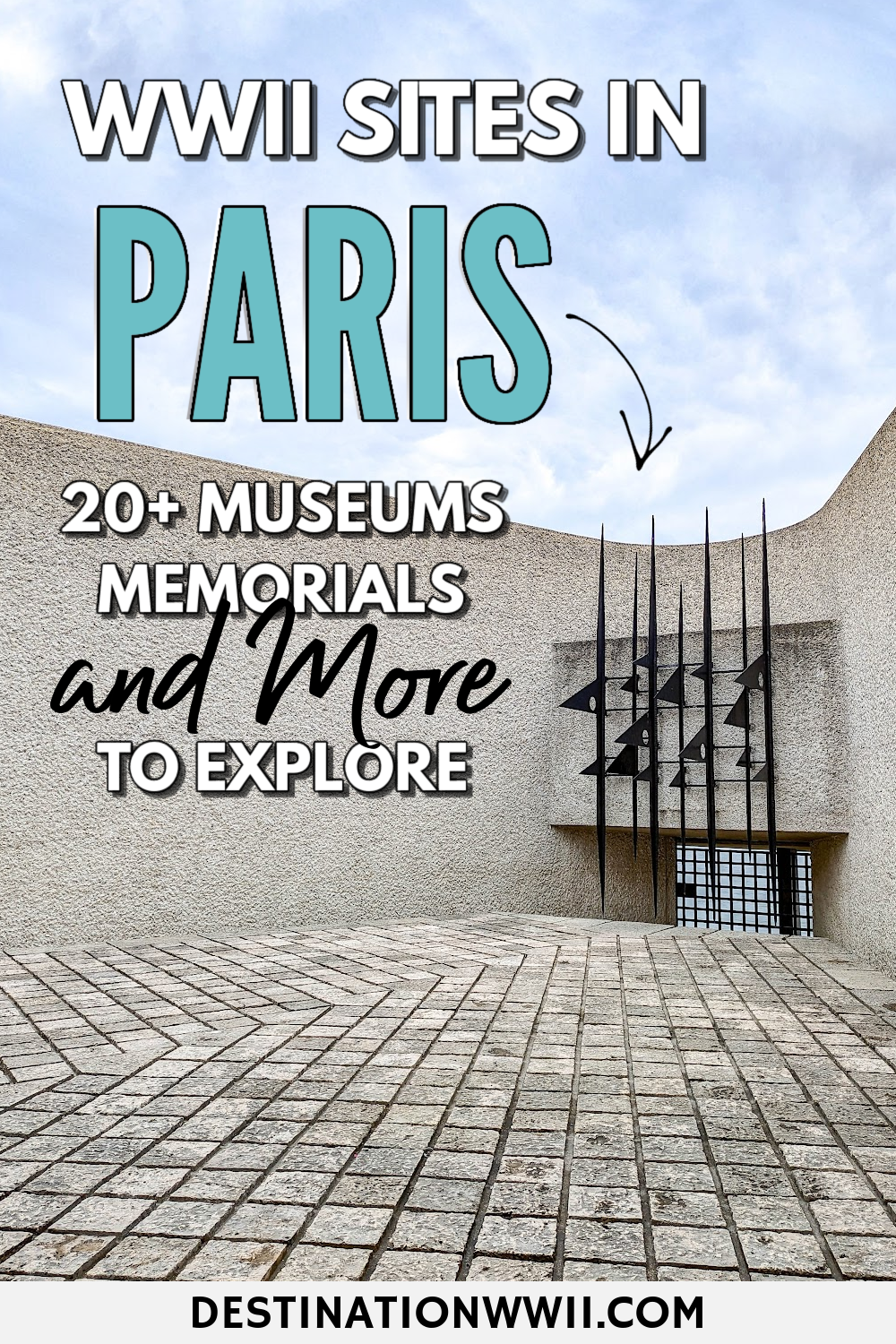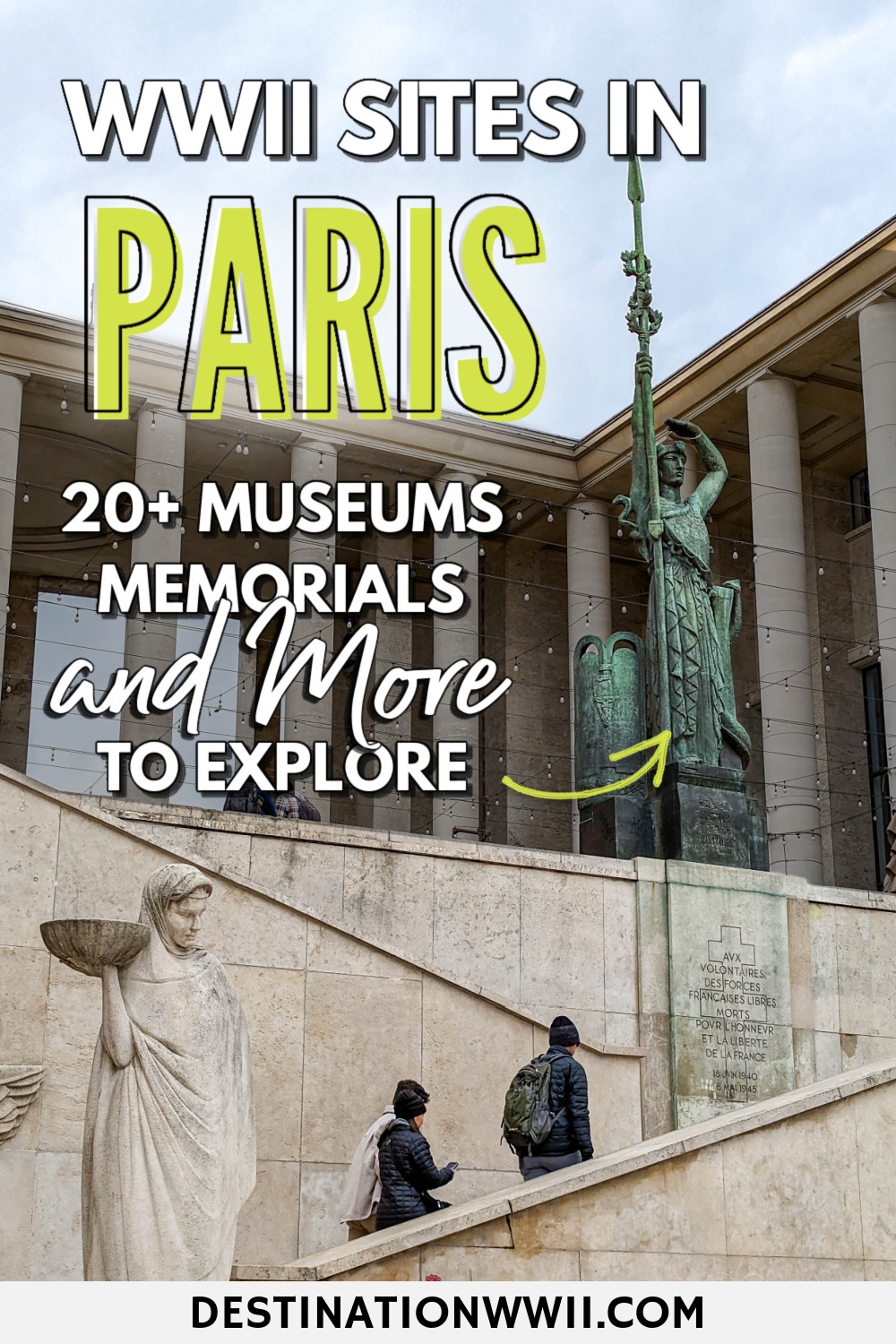Whether you’re visiting Paris before or after a trip to the beaches of Normandy or simply on its own, there are plenty of WWII sites in Paris at which to learn about the city’s wartime history. Though Paris may not have the monumental battlefields and grand museums of Normandy, it does have a lot to say about the events of its Nazi occupation and those who resisted it.
I’ve visited this city many times before, so I’ve finally put together this list of Paris World War II museums, monuments, and memorials. One thing I’ve discovered is that the Nazi Holocaust and the French Resistance are two themes that dominate the narratives at all of them.
On your next trip to France’s capital city, be sure to squeeze in some visits to these WWII sites in Paris.
Don’t miss this post: The 7 Best Normandy tours from Paris to see D-Day in a Day
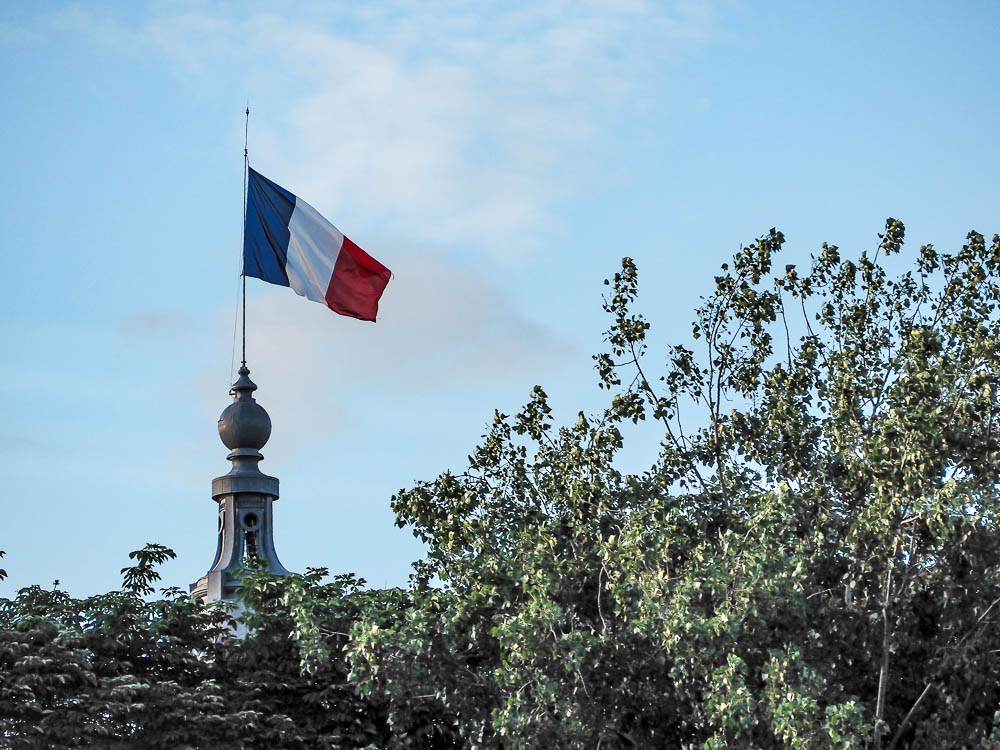
World War II in Paris
After invading Poland on September 1, 1939 and essentially starting World War II, Nazi Germany invaded France on May 10, 1940. After only a month of fighting, poorly-defended France fell to Hitler’s troops and the Nazi regime occupied Paris on June 14.
The French government abandoned the city and set up shop in the town of Vichy, about 220 miles south of Paris. French general Philippe Pétain took over as the head of what would become known as “Vichy France” and began a collaborative relationship with Nazi Germany. Another general named Charles de Gaulle committed to resistance over collaboration and began ruling “Free France” in exile.
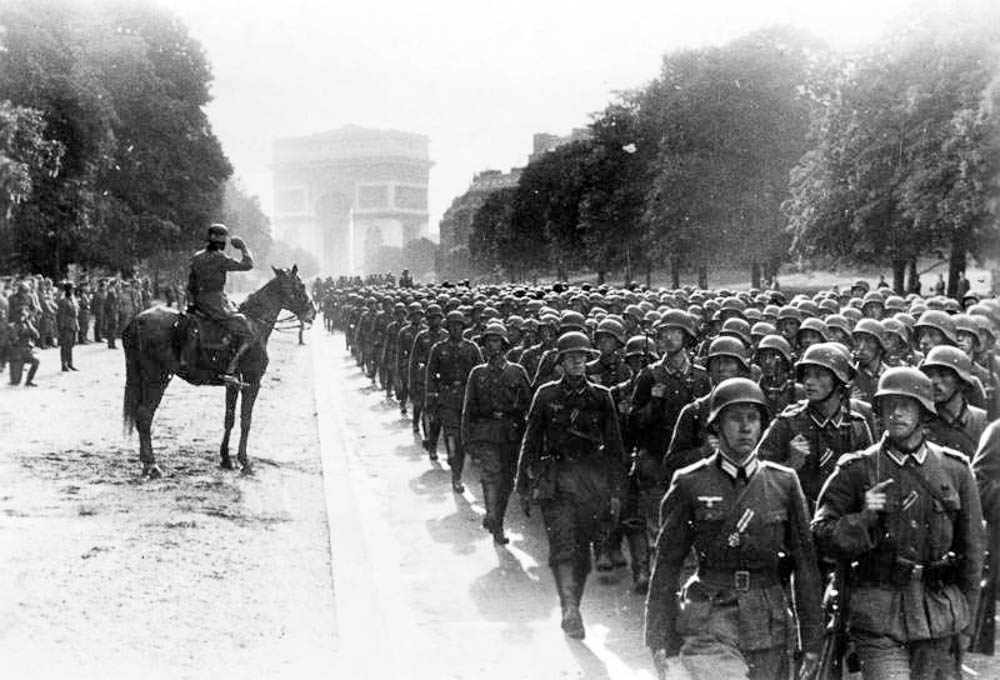
Back in Paris, citizens (and especially Jews) were forced to endure years of brutal Nazi occupation characterized by hardships, violence, and deportations to Nazi concentration camps. The situation remained like this until August 25, 1944 when American troops, together with French troops under De Gaulle’s command, liberated the city almost three months after the D-Day invasion.
Though the occupation of Paris was a nightmare to say the least, a vast network of underground resistance groups developed over the years—the work of which has become legendary. The French resistance began with demonstrations and other public displays of defiance but soon moved onto more clandestine measures like distributing materials and information, aiding Jews, espionage, and sabotage. As the war escalated so did they, eventually turning to armed resistance.
Do you know about the White Rose resistance movement out of Munich, Germany? Click that link for some interesting historical info and eye-opening museums to visit.

WWII sites in Paris: Map
This map contains all the Paris WWII sites I mention in this post. To save this map: Click on the star ⭑ next to the map’s title to save in your Google Maps. To use this map: When you get to Paris, open Google Maps on your phone, click “Saved” at the bottom, then click “Maps.”
WWII museums in Paris
If there’s one thing Paris does better than anywhere else on earth, it’s museums. Paris is home to so many of them, many of which are among the best in the world. Luckily for us, there’s no shortage of museums in Paris that also focus on the events of World War II.
For everything else you want to see and do in Paris, you can save a ton of money and time with a Paris GoCity pass. (I am such a huge fan of sightseeing passes when I travel!) All GoCity Paris passes include a visit to the Eiffel Tower too.
1. Museum of the Liberation of Paris
Despite France’s complicated wartime history, it has always been keen on highlighting its roles as one of the “good guys.” Here at the Museum of the Liberation of Paris you can learn all about one of France’s greatest wartime accomplishments—freeing itself from Nazi occupation.
The Liberation of Paris Museum is also known as the Leclerc Moulin Liberation Museum in honor of Free France General Philippe Leclerc de Hauteclocque and Jean Moulin, one of the biggest heroes of the French resistance.
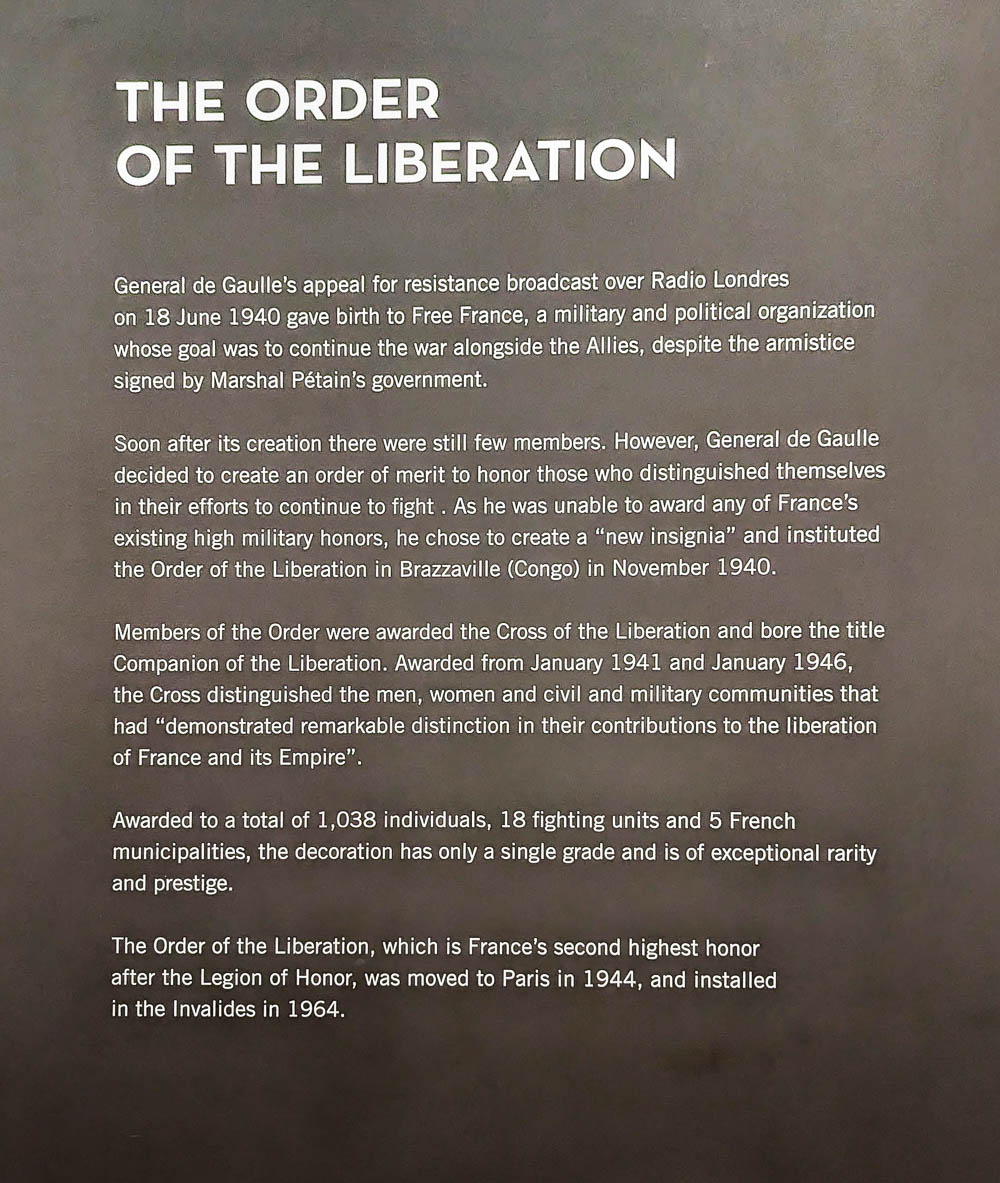
Using these men as its muse, the Liberation Museum tells the story of France during World War II, the French Resistance, and the country’s liberation in 1944. You’ll follow a chronological pathway that incorporates the lives and actions of these two brave men with the above themes.
This is arguably the most popular of the WWII sites in Paris and one of the most well-done museums on the topic. If you want to learn about the French Resistance and the liberation of Paris, don’t miss this one.
Liberation Museum of Paris need to know
Here are some key things you need to know for visiting Paris’s Liberation Museum:
- Look for this name in French: Musée de la Libération de Paris
- Neighborhood: Montparnasse / 14th Arrondissement
- Open: Tuesday – Sunday, 10am – 6pm
- Admission: Free
- Accessibility: Almost completely accessible to those with reduced mobility. For those who can’t access the one non-accessible room, a 360° virtual tour is available on request.
- Guided tours: The museum offers guided tours but only in French.
- Pro tip: Download the official museum app for a couple of free self-guided tour options. Available in English, French, Spanish, and German. [Get it here for Android / Apple.]
- Visitor information here: museeliberation-leclerc-moulin.paris.fr

2. The Army Museum at Les Invalides
Les Invalides is most famous for being the location of Napoleon’s tomb (which you should totally visit while you’re there, by the way). But, Invalides is actually a massive complex that contains many military-centered museums, which is why this is a must-visit on the list of WWII sites in Paris.
Within the Invalides complex is the Army Museum, the national military museum of France. Inside you’ll find sections on French military history dating back to the 13th century, arms and armor, and much more. But what we’re particularly interested in is the area dedicated to the Second World War.
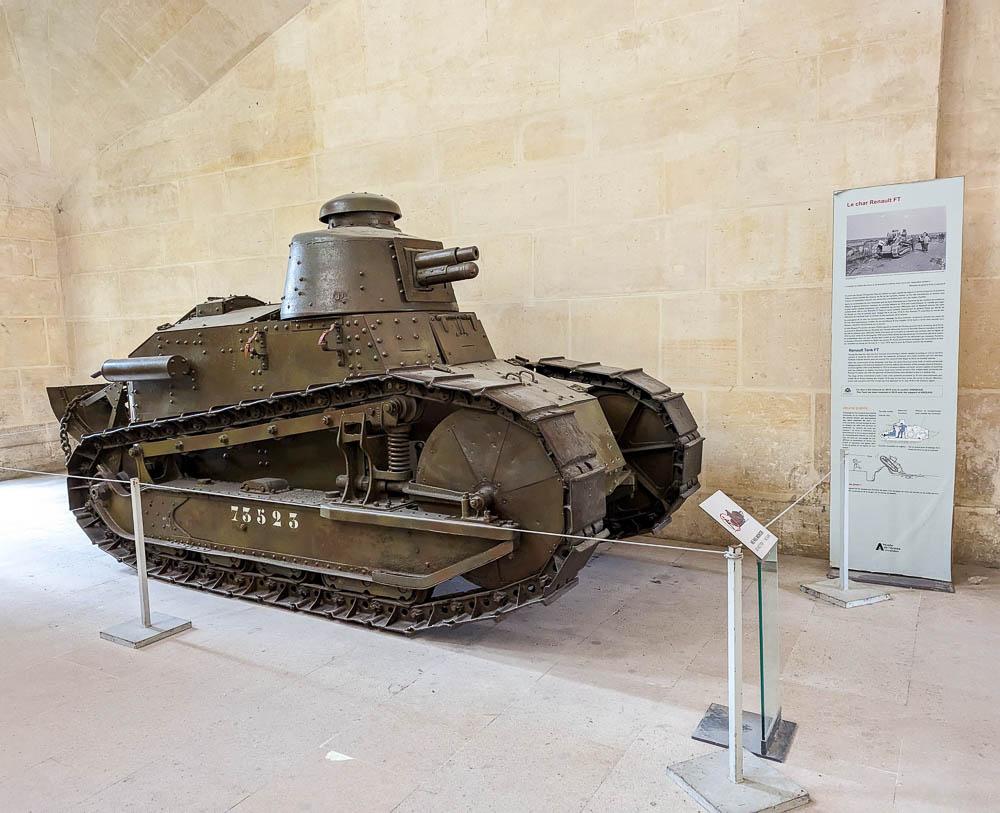
This part of the Invalides Army Museum is broken up into four parts:
- Years 1939-1942 – the fall and occupation of France, the Vichy government, and the beginning of Free France.
- Years 1942-1944 – the first Allied victories, the French resistance movements, and the rebirth of the French army in North Africa.
- Years 1944-1945 – the Normandy landings, liberation of France, and the discoveries of the concentration camps.
- Berlin and the Cold War – what happened after/as a result of WWII.
This museum tells these stories through tons of engaging artifacts like French uniforms, soldiers’ possessions, personal letters, film footage and photographs, maps, and recreated models. (There’s an equally interesting area dedicated to the First World War too if you’re interested.)
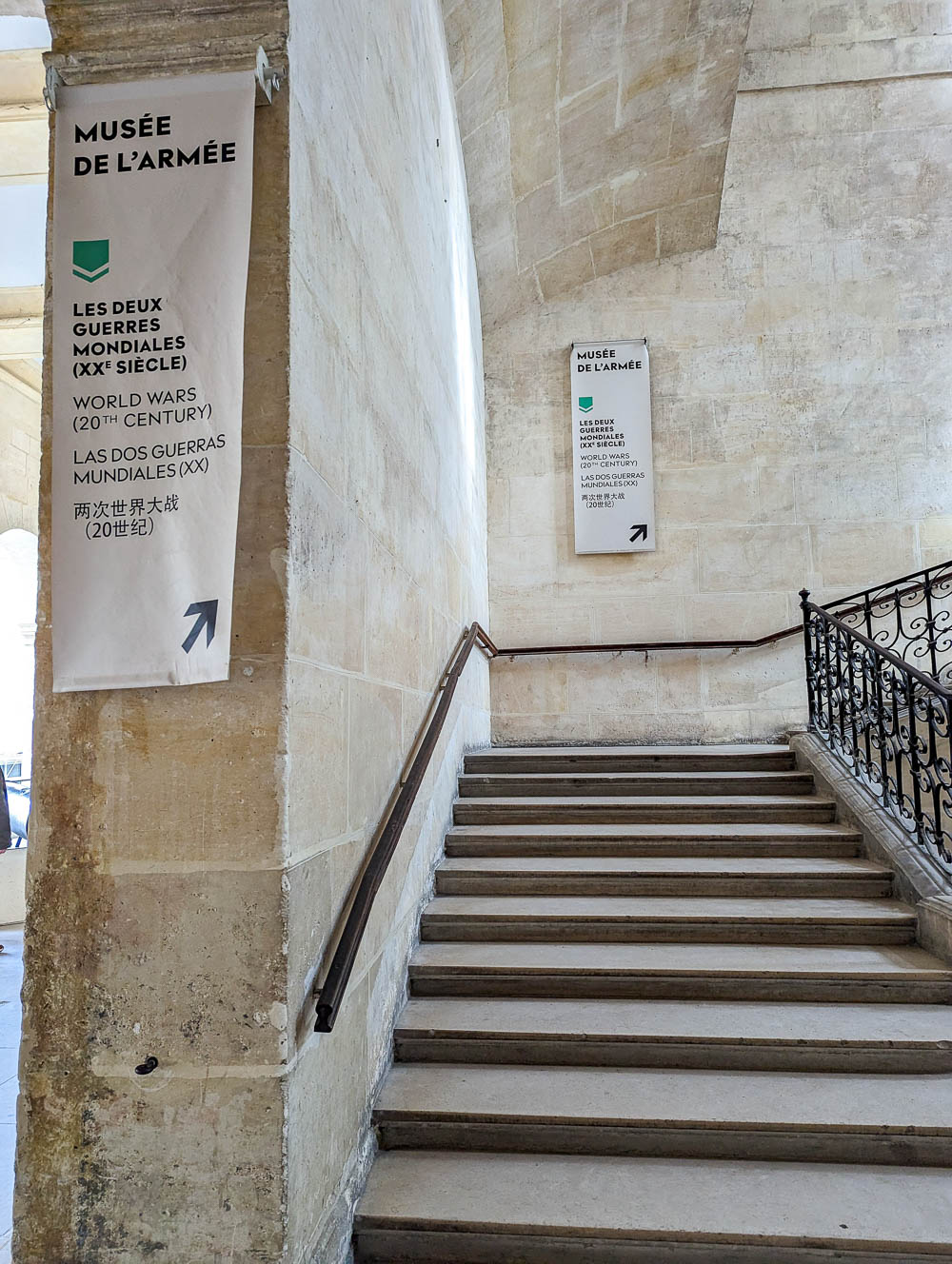
Invalides Army Museum need to know
Here are some key things you need to know for visiting the Army Museum at Les Invalides:
- Look for this name in French: Musée de l’Armée
- Neighborhood: 7th Arrondissement
- Open: Daily from 10am – 6pm (9pm on Tuesdays, 10pm on the first Friday of each month)
- Admission: €17 standard adult admission (see website for all price levels)
- Accessibility: Much of the museum complex is accessible and wheelchairs are available to borrow. See all the accessibility info here.
- Guided tours: Guided tours are offered, but the options aren’t great. Or in English. I would recommend the digital guide instead.
- Pro tip: The €17 admission cost gets you into all the museums at Les Invalides including many of the ones listed in this post!
- Visitor information here: musee-armee.fr/accueil.html
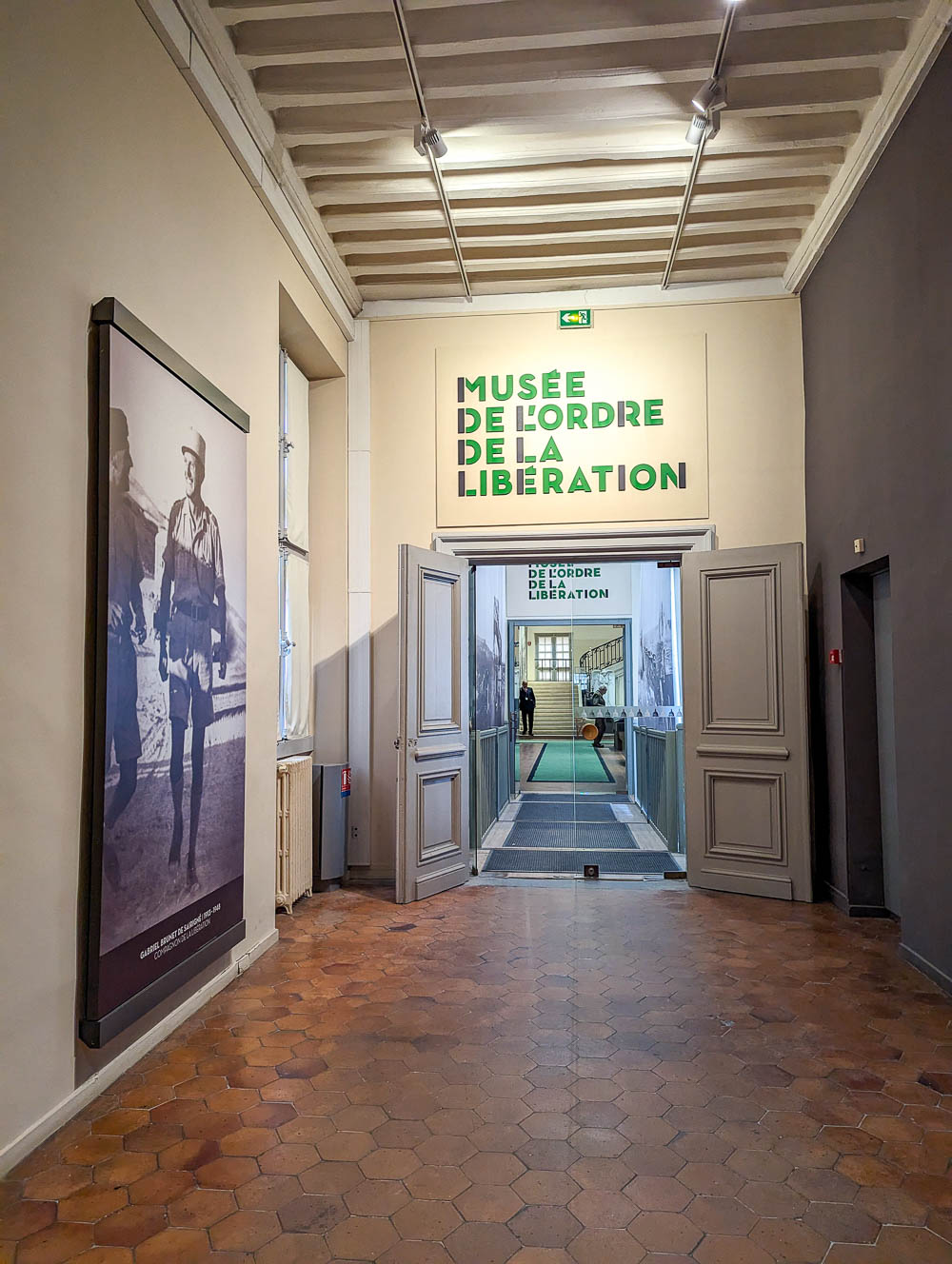
3. Museum of the Order of the Liberation
Also located within the Invalides complex is the Museum of the Order of the Liberation—not to be confused with the Museum of the Liberation (No. 1 on this list). As part of the larger Army Museum, this museum focuses entirely on the Order of the Liberation, an entity created by Charles de Gaulle “to honor the fighters who made an outstanding contribution to the liberation of France.”
This museum uses over 2,000 historical artifacts to retrace the history of Free France and the French Resistance through World War II. And though this museum is not as well-known as some of the other WWII sites in Paris, I was incredibly impressed with this place.
Descriptions make it sound small and simple, but this museum is much larger and more engaging than I ever expected. (Plus, it’s big on physical artifacts over reading tons of information, which I find much more interesting.)

Museum of the Order of the Liberation need to know
Here are some key things you need to know for visiting the Order of the Liberation Museum:
- Look for this name in French: Musée de l’Ordre de la Libération
- Neighborhood: 7th Arrondissement
- Open: Daily from 10am – 6pm
- Admission: €17 standard adult admission, included with your overall Invalides admission
- Accessibility: Accessible entrance is by the north reception deck.
- Guided tours: For groups of 10+ only, see website for more info.
- Pro tip: Maybe give yourself a little more time here than you think you need.
- Visitor information here: ordredelaliberation.fr
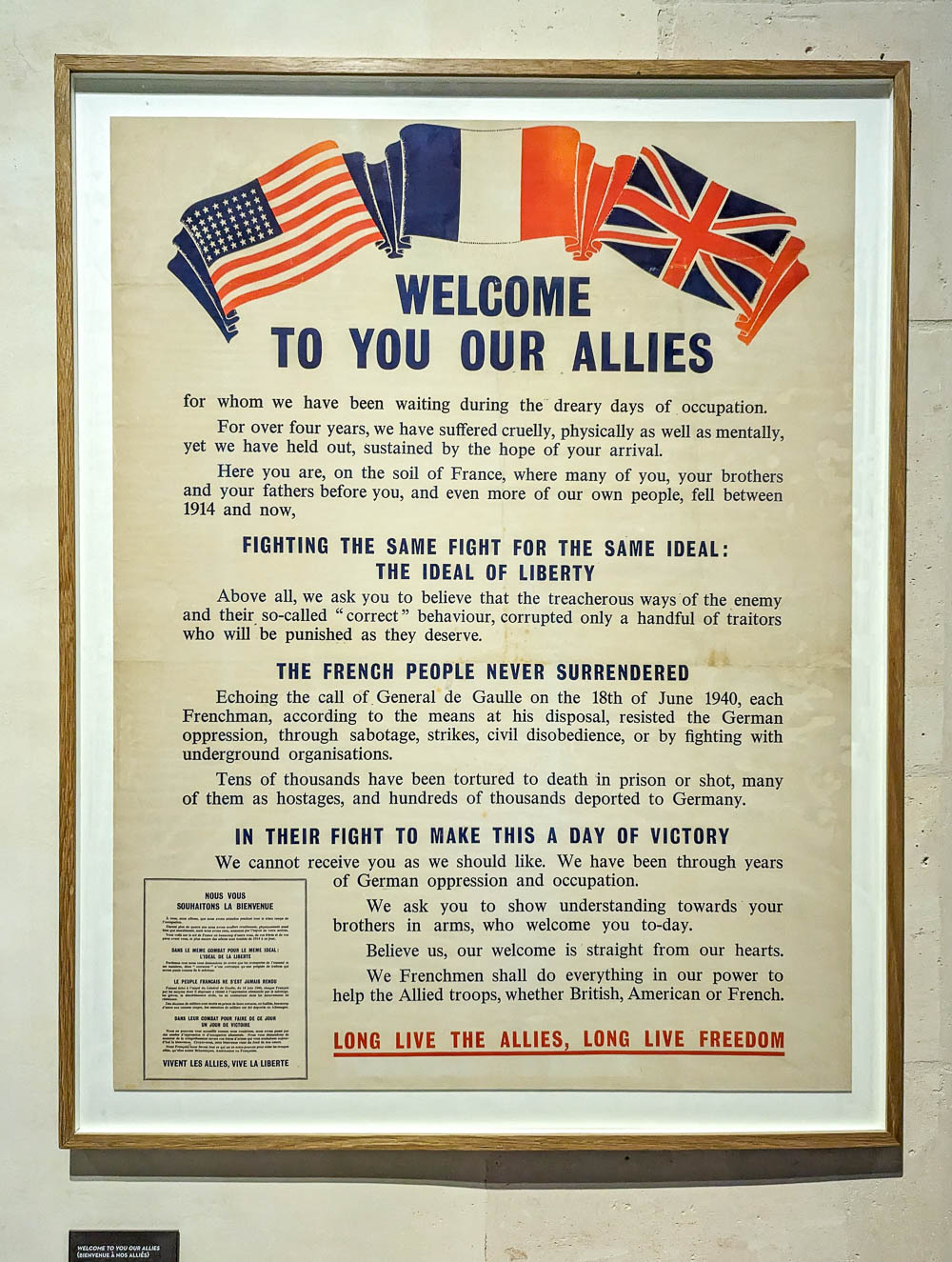
4. Charles de Gaulle historial
Also located at Les Invalides is the Charles de Gaulle historial. This unique little museum showcases the life and work of Charles de Gaulle, army general, leader of Free France, and eventually the President the France.
The historial is less of a museum and more of an interactive multimedia presentation on Charles de Gaulle’s life. There’s a lot to read but there’s also lots of video footage, booming audio, flashing lights, and dramatic music. It’s clear how Paris wants De Gaulle to be remembered, to say the least.
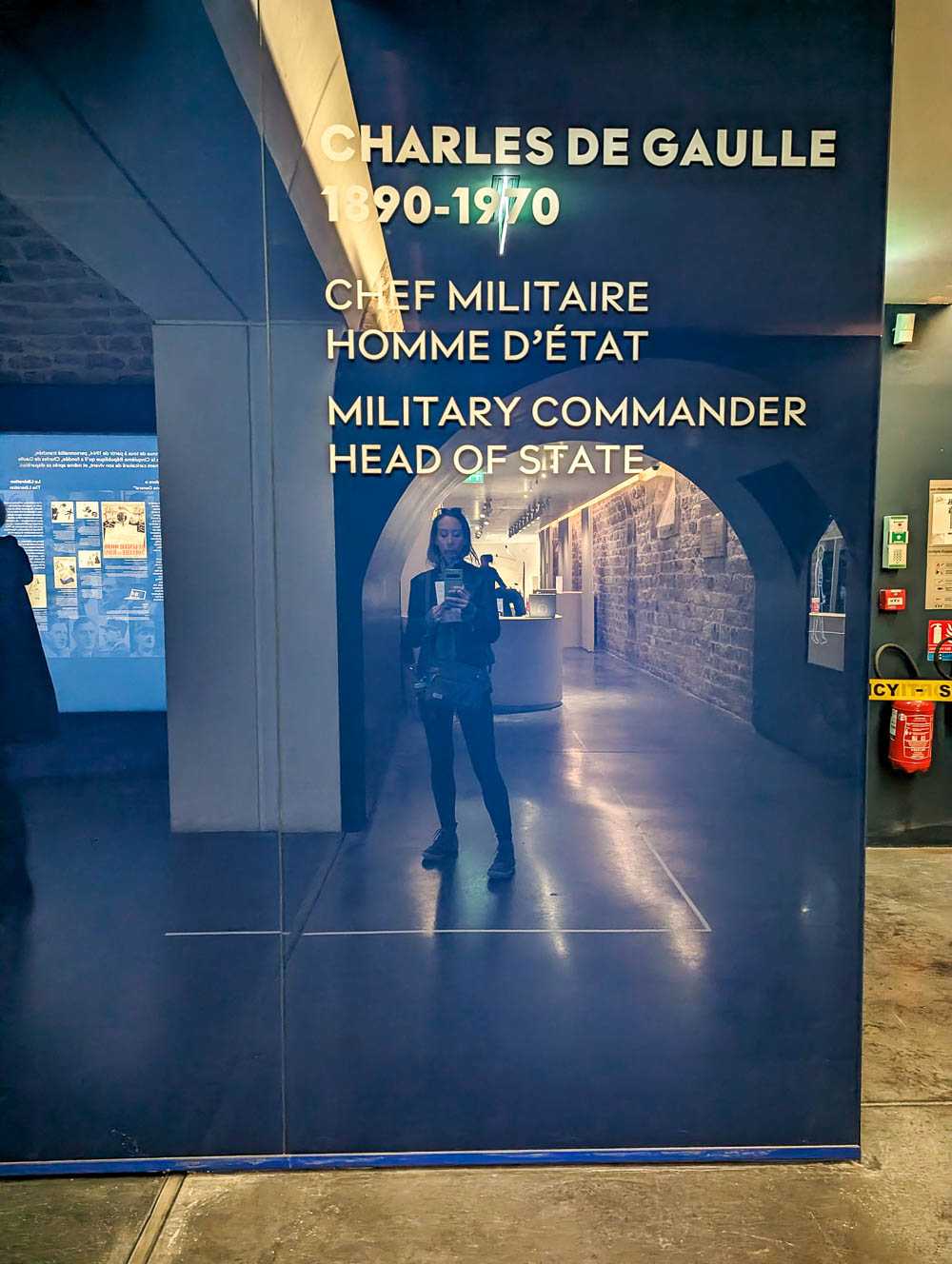
Though the historial covers his entire life, I focused mainly on the World War II years to save time. However, you can learn much more here about the man behind Free France. (Just don’t expect an unbiased account, all I’m saying.) Pick up the audio guide when you enter to access over 20 hours of audio content. Needless to say, my visit was a lot shorter.
Charles de Gaulle historial need to know
Here are some key things you need to know for visiting the Charles de Gaulle historial:
- Look for this name in French: Historial Charles de Gaulle
- Neighborhood: 7th Arrondissement
- Open: Daily from 10am – 6pm
- Admission: €17 standard adult admission, included with your overall Invalides admission
- Accessibility: The historial is wheelchair accessible.
- Guided tours: The audio guide is included in your admission cost.
- Pro tip: Skip through to the WWII years if you’re short on time.
- More information here: Historical Charles de Gaulle
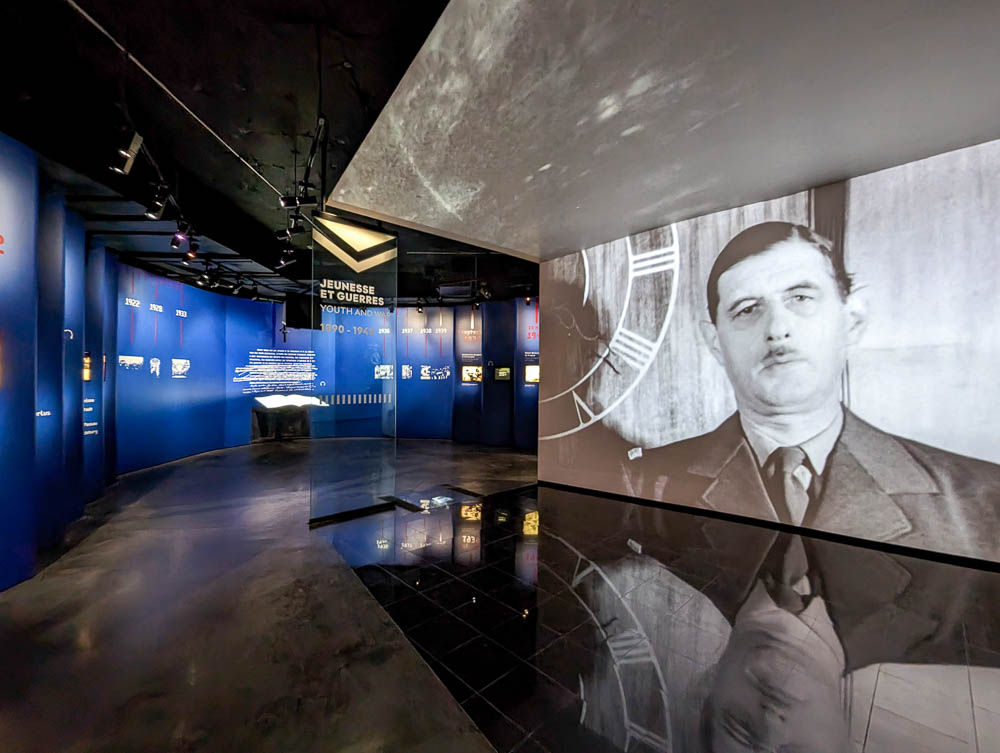
5. Museum of the Armed Forces Health Service
What began as an anatomy collection back in the 18th century is now the Museum of the Armed Forces Health Service showcasing 300 years of French army medical corps history. (Including its contributions to WWII.)
It focuses on such aspects as the development of the army medical corps and how it served the armed forces, historical medical instruments, and more. It’s housed in the church of Val-de Grâce. If you’re looking for something unique among the WWII sites in Paris, remember this one!
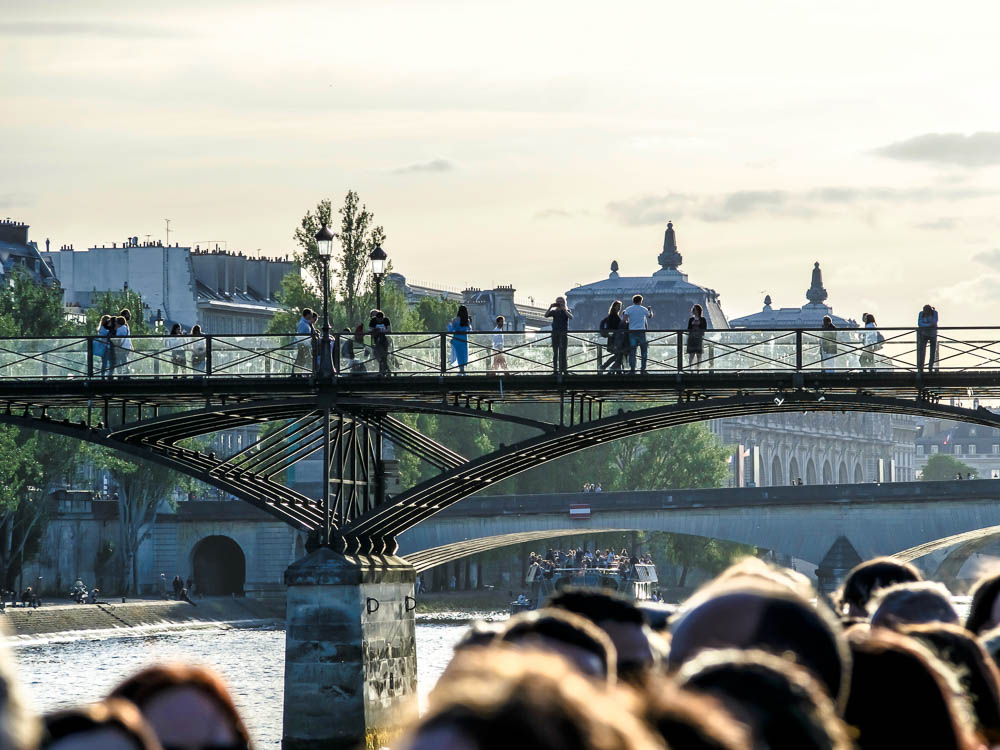
Museum of the Armed Forces Health Service need to know
Here are some key things you need to know for visiting the Museum of the Armed Forces Health Service:
- Look for this name in French: Musée du Service de Santé des Armées (or École du Val-de-Grâce)
- Neighborhood: 5th Arrondissement
- Open: Noon – 6pm, every day except Monday & Friday
- Admission: €5, full price adult
- Accessibility: Unknown (but given the museum’s content I would be shocked if it was not accessible)
- Guided tours: Not available
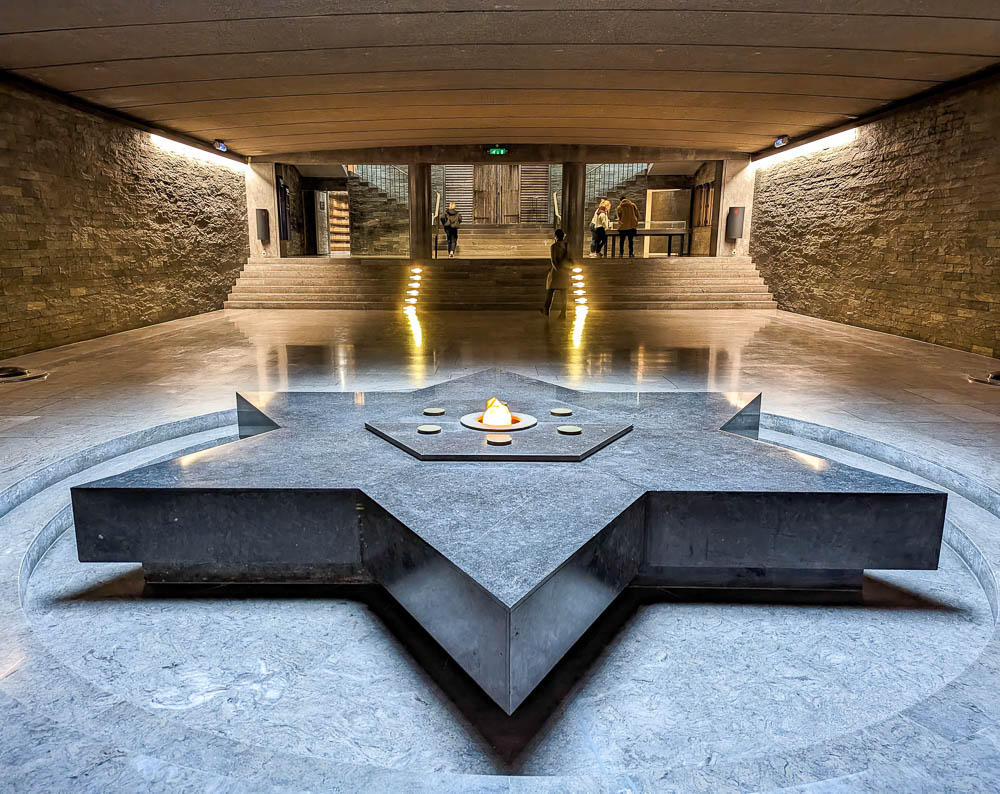
6. Mémorial de la Shoah
The Shoah Memorial of Paris is Paris’s main Holocaust memorial, documentation center, and museum (so it’s going under both sections). It focuses mainly on Jewish history during World War II (primarily the Holocaust) and especially that which occurred in Paris/France.
Outside the museum you’ll find large informational panels all the way down the block that explain a lot of what happened in the Jewish community in Paris during the Holocaust. Before you enter the museum you’ll pass through a Wall of Names, which is obviously not just one wall but many.
Inside, you’ll find 12 chronological themed exhibits that trace the history of France’s Jews during WWII and the Holocaust. There’s also a bookshop, an archival documentation center, and a symbolic crypt and memorial (to name a few of the spaces).
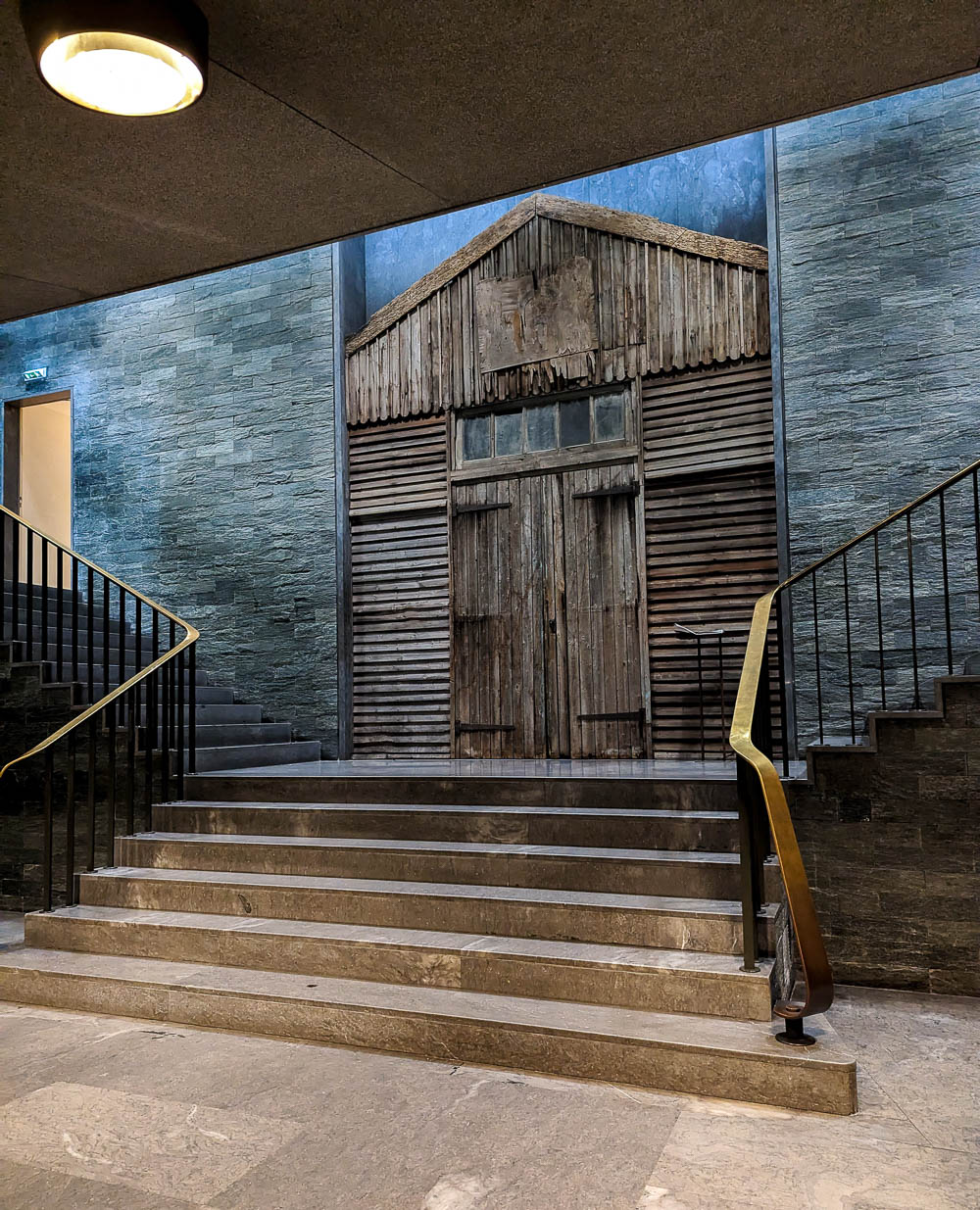
Memorial de la Shoah need to know
Here are some key things you need to know for visiting the Memorial de la Shoah:
- Look for this name in French: It’s already in French, but in English you would call it the Holocaust Memorial.
- Neighborhood: Le Marais / 4th Arrondissement
- Open: Daily from 10am – 6pm (9pm on Thursday) but closed on Saturdays
- Admission: Free
- Accessibility: Fully accessible
- Guided tours: Free every Sunday at 3pm in French and every second Sunday of the month in English. Tours last about 90 minutes.
- Pro tip: The Shoah Memorial is also closed on Jewish holidays. (See website for full list.)
- More information here: memorialdelashoah.org
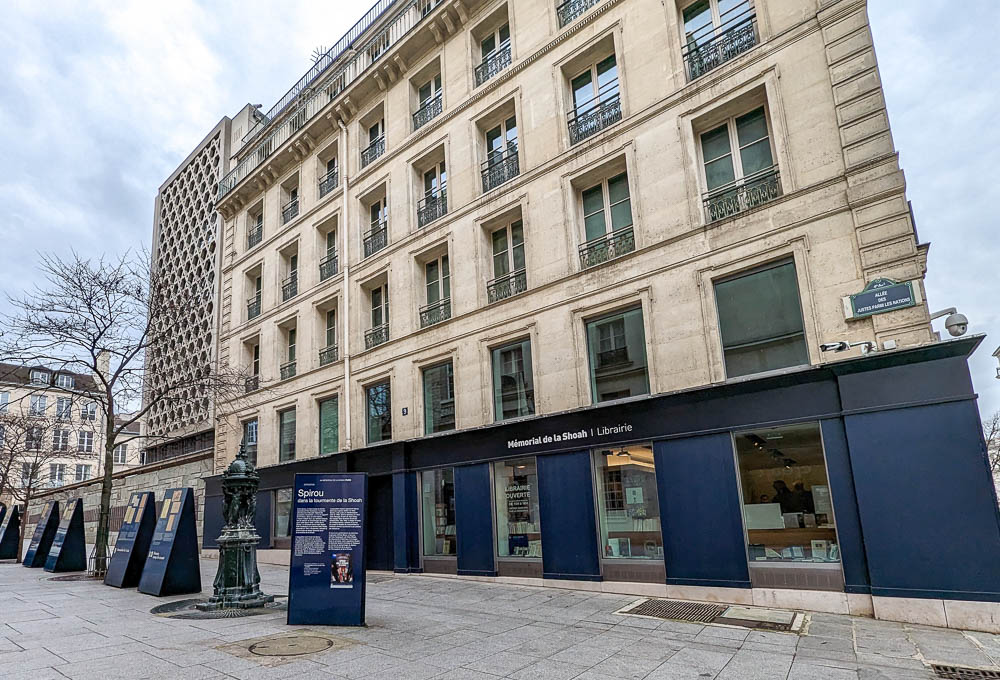
7. National Air and Space Museum of France
Just a little outside central Paris is the National Air and Space Museum of France. This museum fills over 1.6 million square feet of display space with 150 aircraft, spacecraft, and the rest of its collection of almost 20,000 items.
Paris’s Air and Space Museum has halls dedicated to all kinds of topics, but the one we’re interested in is the Second World War wing. Here you get to see aircraft like a C-47 Skytrain, a P-51 Mustang, and a Submarine Spitfire. This section also displays a German V-1 flying bomb. But this is only a fraction of the awesome artifacts you’ll see here.

The Air and Space Museum is just a short drive from the center of Paris but is directly en route to Paris’s Charles de Gaulle airport. So if you can’t fit in a visit during your Paris trip, perhaps you can squeeze one in on your way in or out of town.
Air and Space Museum need to know
Here are some key things you need to know for visiting the National Air and Space Museum of France:
- Look for this name in French: Musée de l’Air et de l’Espace
- Neighborhood: Dugny, France
- Open: Tuesday – Sunday from 10am – 6pm (Apr 1 – Sept 30) and 10am – 5pm (Oct 1 – Mar 31); closed Mondays
- Admission: €17, full price adult
- Accessibility: The Air and Space Museum is accessible for all – including those with physical, hearing, learning, and visual impairments.
- Guided tours: Unknown
- Pro tip: The first Sunday of every month is free!
- More information here: museeairespace.fr

Visiting World War II sites with kids: Should you? Can you? Get everything you need to know on bringing your kids to sites like battlefields, museums, and concentration camps in that link.
WWII memorials and monuments in Paris
Beyond museums, there are also many WWII sites in Paris that commemorate noteworthy events in the city’s history or memorialize brave individuals. These are plentiful and can be found all over the city. Here’s a rundown of what to look for.

8. Deportation Martyrs Memorial
The Paris Deportation Martyrs Memorial is located just behind Notre Dame Cathedral and memorializes the more than 200,000 French citizens who were deported to Nazi concentration camps.
Underground and just at the Seine water line, this memorial takes you down under Paris’s Île de al Cité into what is more or less a crypt. The space is dark and disorienting, with flashing lights and red letters carved into the walls.
Inside are urns that contain soil from the main Nazi death camps and the remains of an unknown deportee. You’ll find information on the deportations, maps of the camps, and the names of those who were taken.
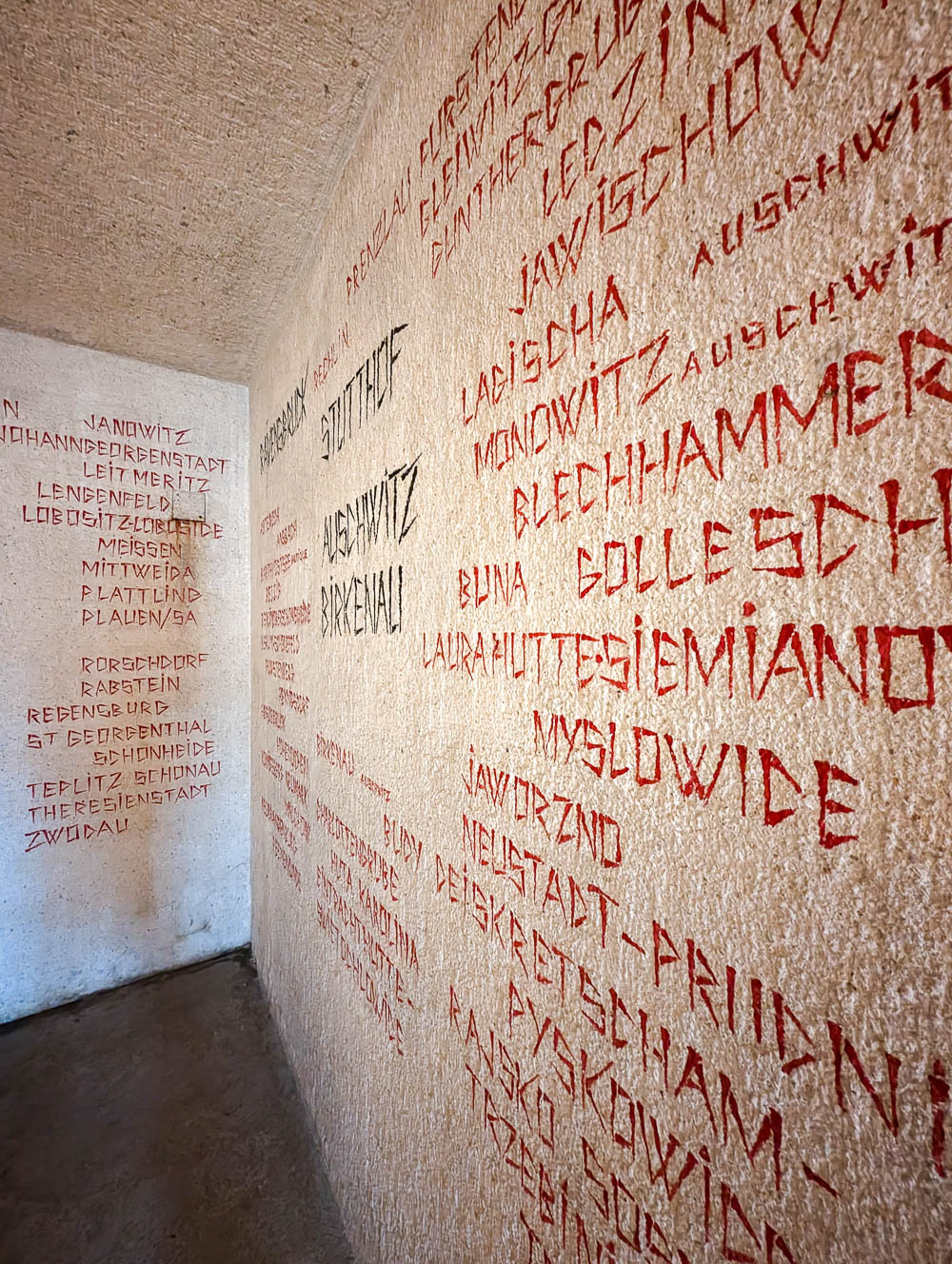
Deportation Memorial need to know
Here are some key things you need to know for visiting the Deportation Memorial:
- Look for this name in French: Mémorial des Martyrs de la Déportation
- Neighborhood: Île de la Cité, 4th Arrondissement
- Open: Daily from 10am – 5pm (Oct 1 – Mar 31) and from 10am – 7pm (Apr 1 – Sept 30). Closed on the first Monday of the month.
- Admission: Free
- Accessibility: You must descend a set of stairs to visit this memorial.
- Guided tours: Available in English and French (and German and Spanish by reservation).
- Pro tip: You can also pick up an audio guide for your visit.

9. Memorial de la Shoah
I’m putting the Shoah Memorial here again because it is indeed both a museum and a memorial, like many of the WWII sites around the world. This one in particular has both significant museum space and a number of meaningful memorials.
At the Shoah Memorial you’ll find a Wall of Names featuring the names of 76,000 Jews who were deported from France, the Wall of the Righteous featuring the names of almost 4,000 people who risked their lives to save France’s Jews, and a large black marble Star of David in the crypt that serves as a symbolic tomb to the Holocaust’s six million victims.

10. Vel d’Hiv Memorial Garden
As one of the sadder WWII sites in Paris, the Vel d’Hiv Memorial Garden is dedicated to the memory of the 4,115 children who were rounded up and deported to the extermination camps on July 16 & 17, 1942.
In this small park you’ll find a wall of remembrance that lists the names of the children, some memorial sculptures, photos and information on the children taken, as well as beautiful plants and flowers.
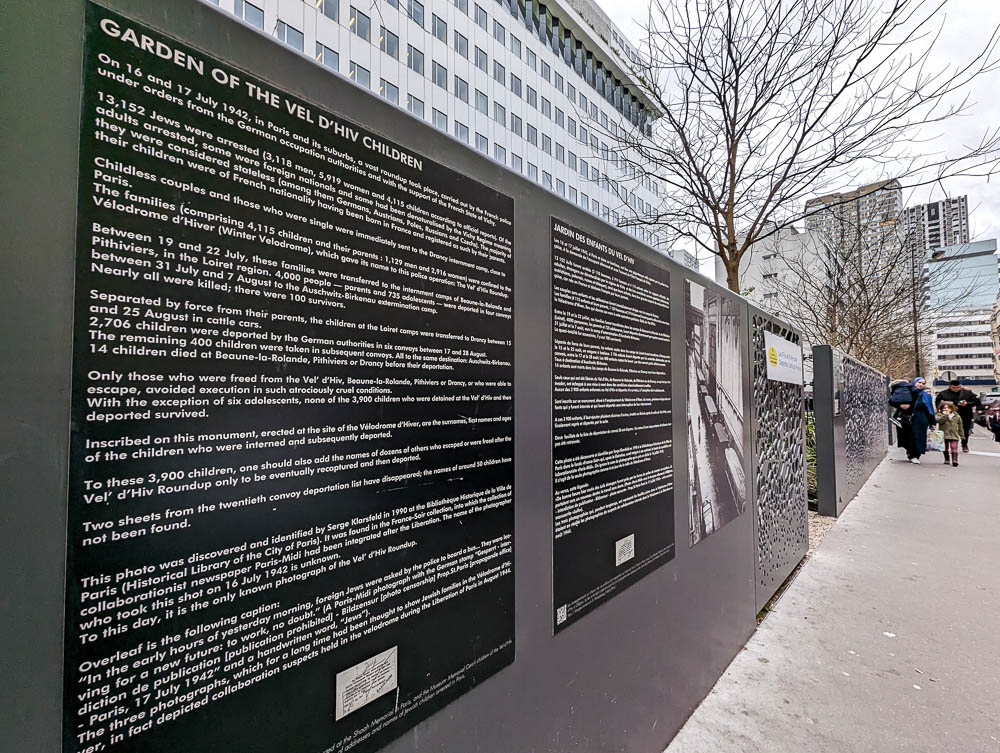
This memorial garden is named after the Vel’ d’Hiv’ Roundup, the mass arrest of Jewish families that took place at the former Rafle du Vélodrome d’Hiver—the “Winter Stadium.” This park was built on the location of the former stadium, just a few blocks from the Eiffel Tower.
Vel d’Hiv Memorial Garden need to know
Here are some key things you need to know for visiting the Vel D’Hiv Memorial Garden:
- Look for this name in French: Jardin Mémorial des Enfants du Vél d’Hiv’
- Neighborhood: 15th Arrondissement
- Open: Always open
- Admission: Free
- Accessibility: The park is at street level but the ground is covered in gravel.
- Guided tours: Not available
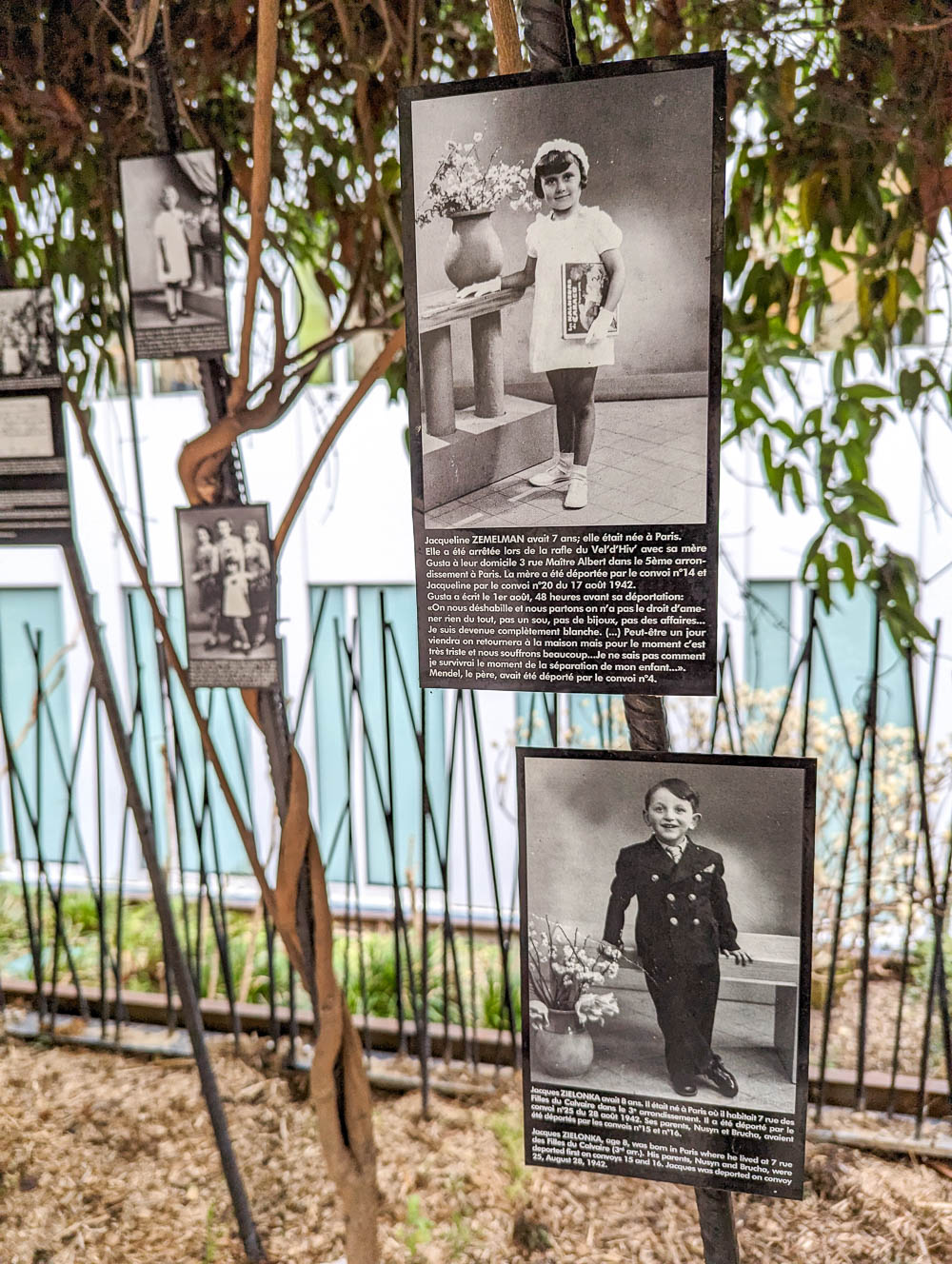
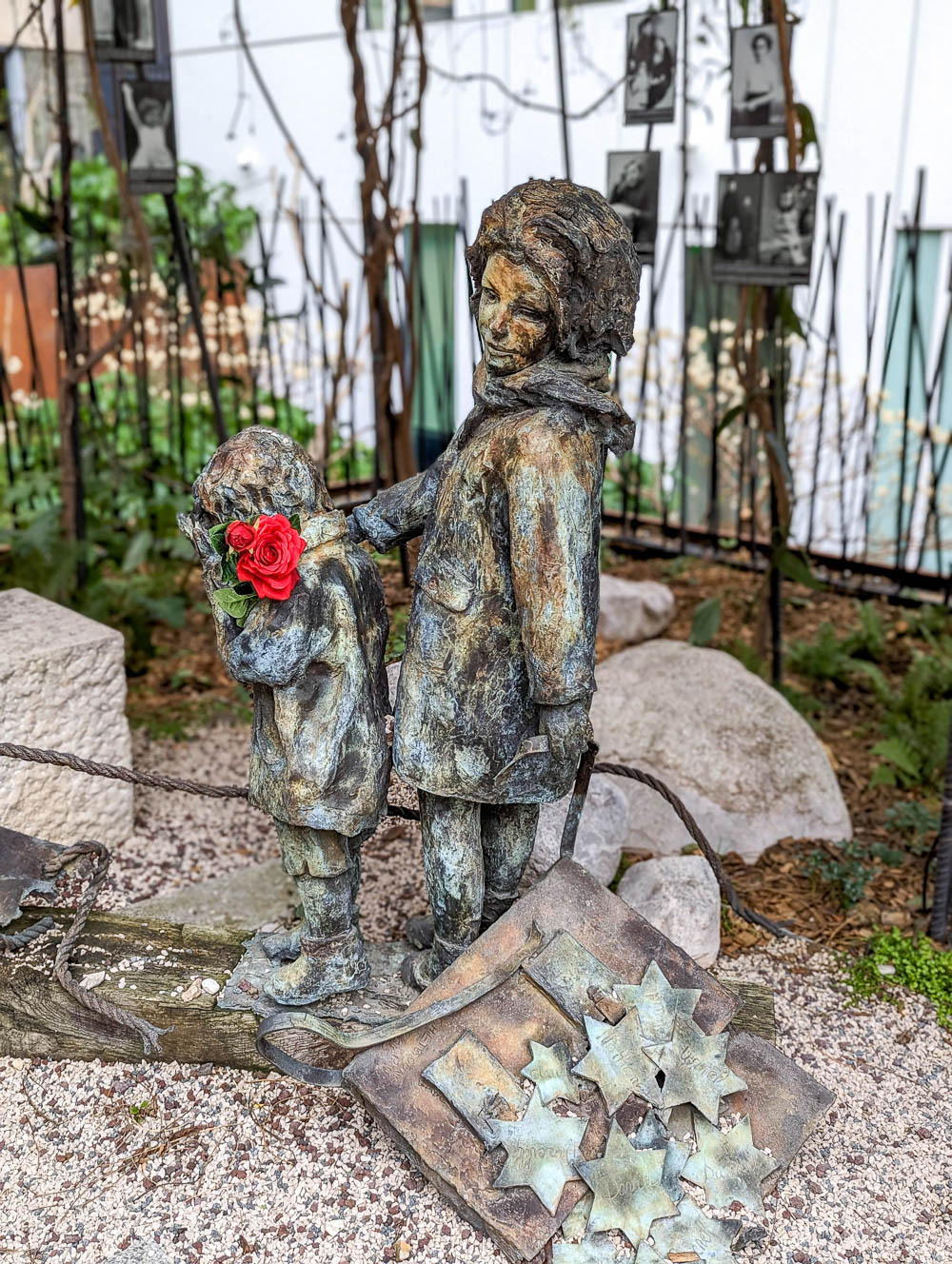
11. Memorial to LGBTQ+ victims of Nazi Persecution
Officially named “Aux Oubliées et Oubliés” (“To the Forgotten Ones”), this memorial is Paris’s newest having just been unveiled in May 2025. Designed by French artist Jean-Luc Verna, it honors all LGBTQ+ victims of Nazi persecution including the 100,000 men arrested for homosexuality (50,000 were sentenced), and somewhere between 5,000 and 15,000 who were sent to die in concentration camps.
The memorial features a large star (part of a wand) that’s matte black on one side and mirrored on the other. It sticks out of the ground between the Canal Saint-Martin and Boulevard de la Bastille (on the edge of the 12th arrondissement).
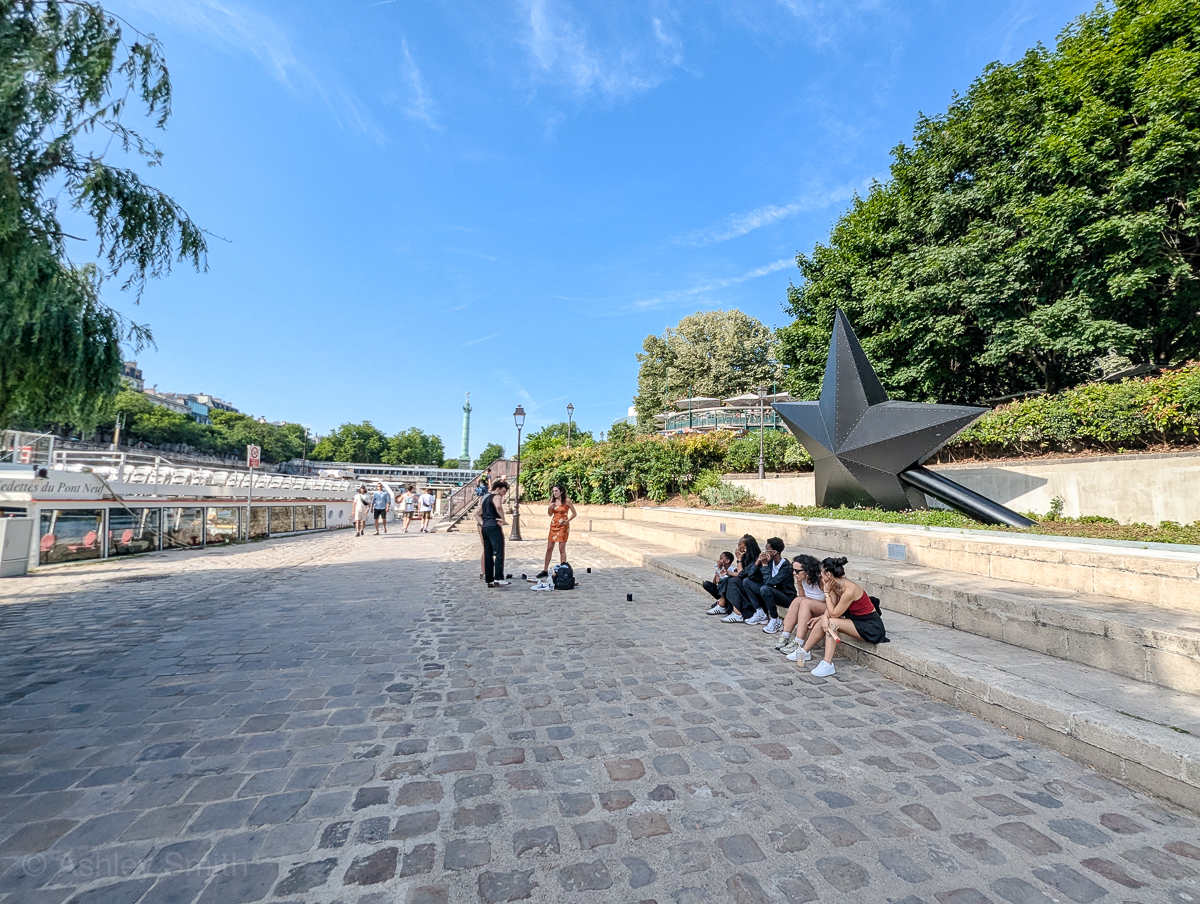
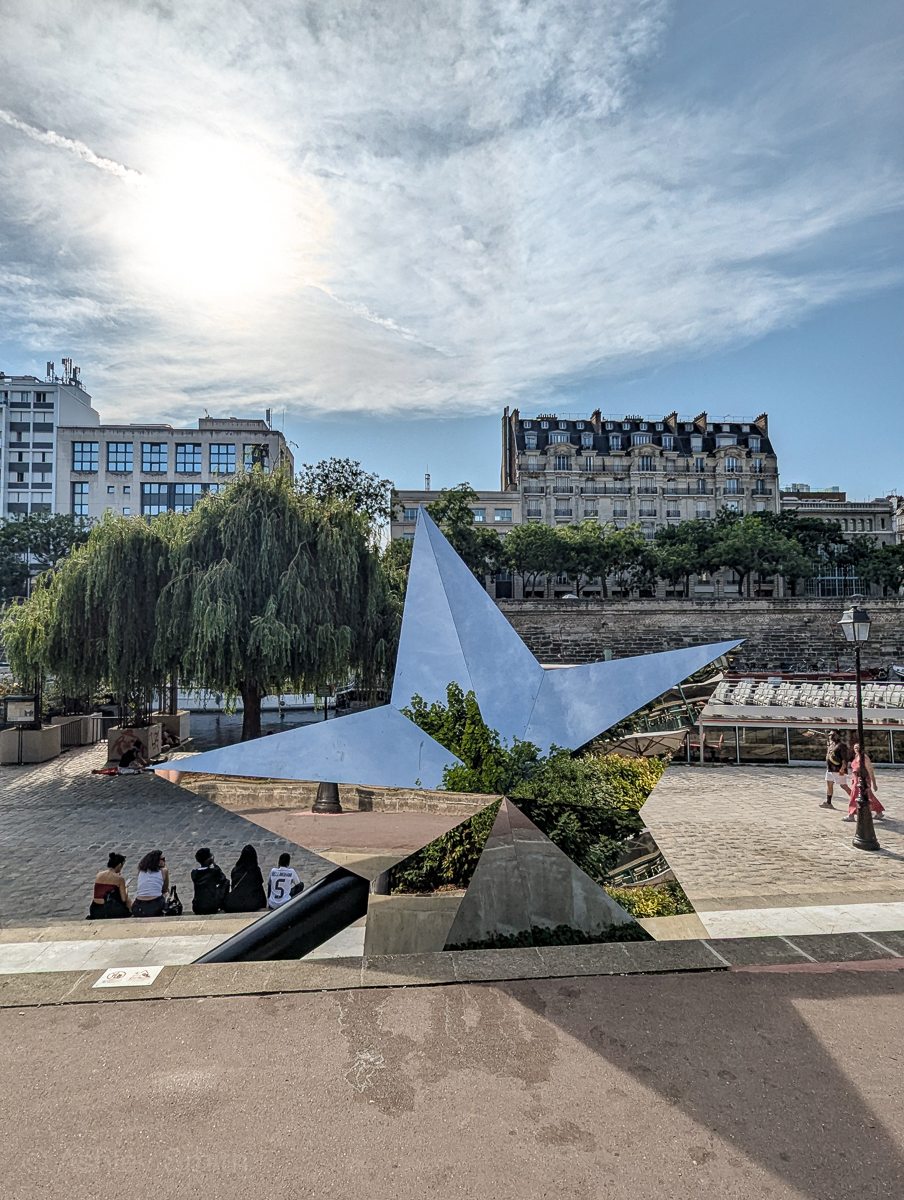
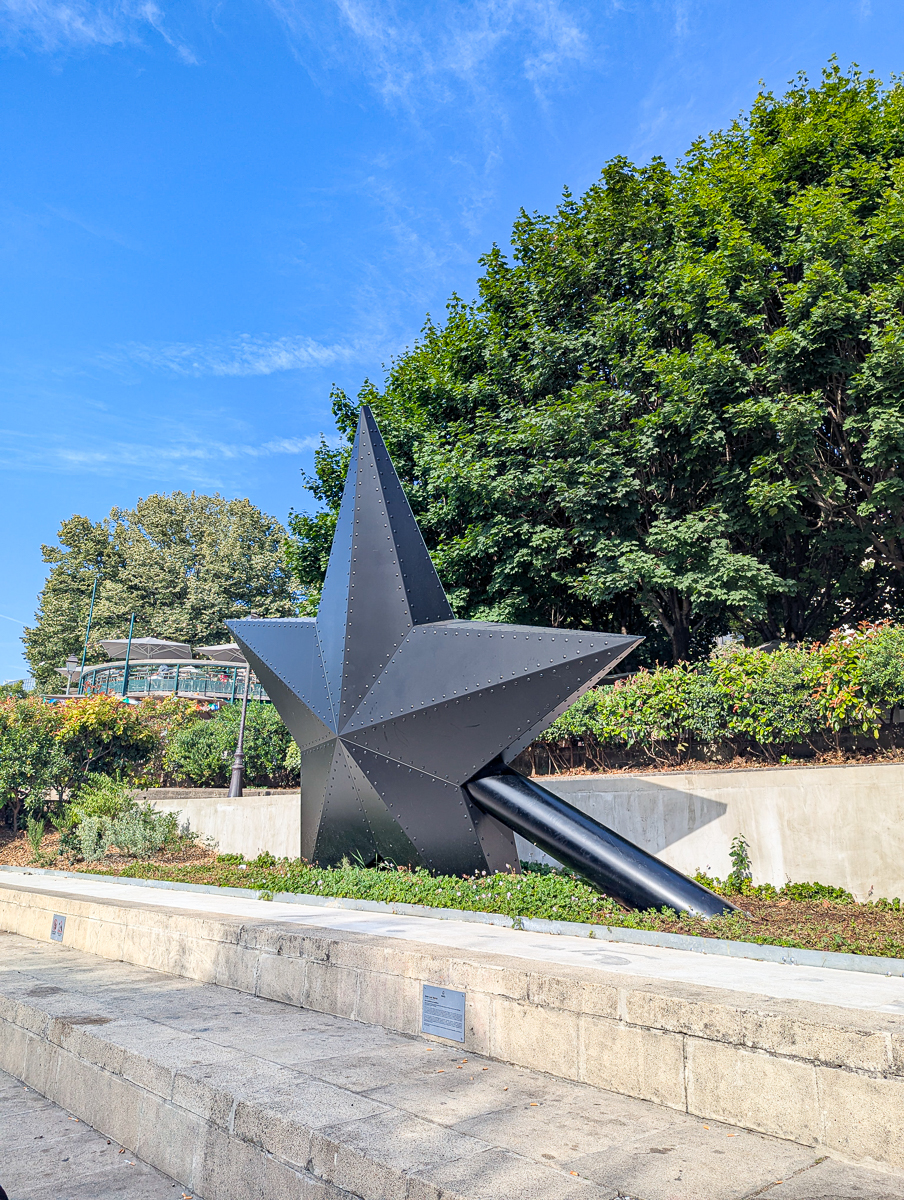
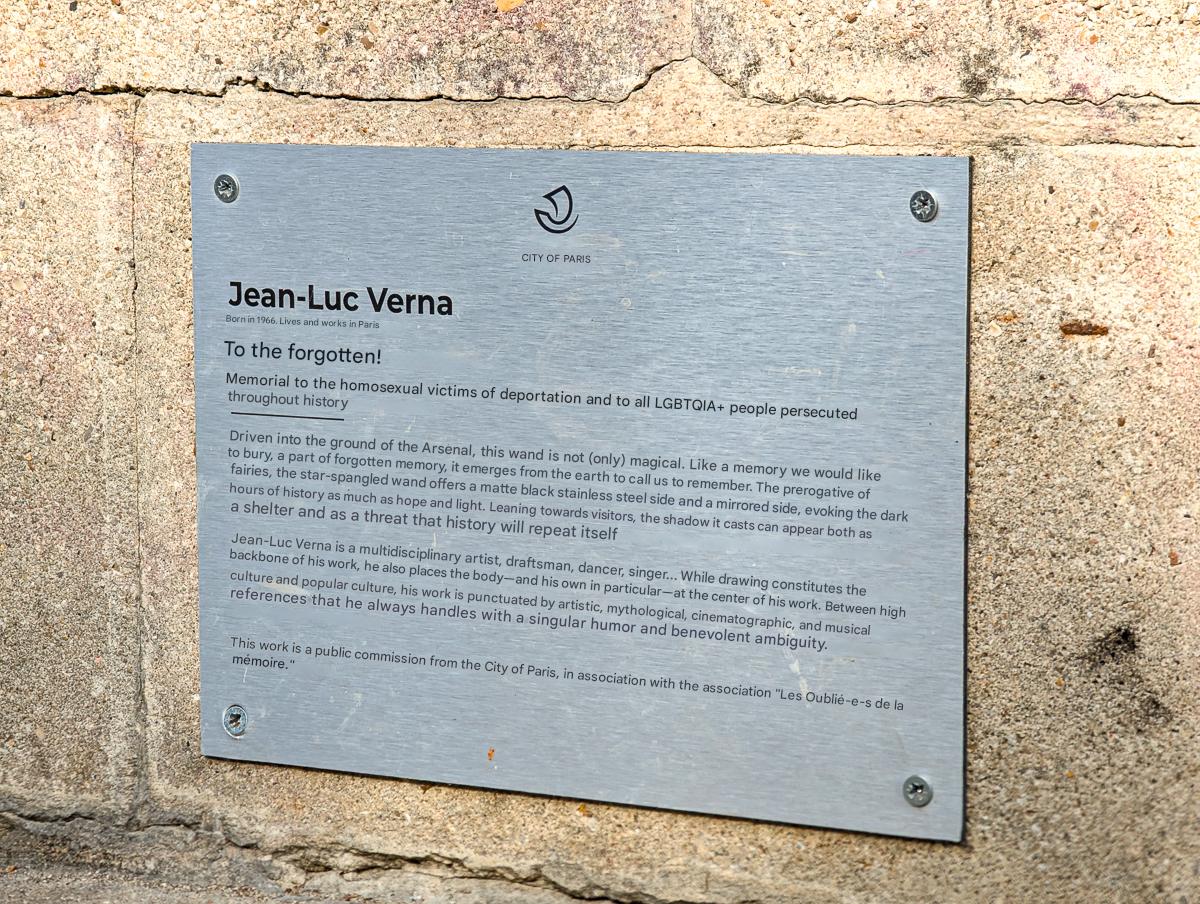
12. Free France monument
Across the river from the Eiffel Tower stands the monument to Free France, the centerpiece to the Palais de Tokyo (Tokyo Palace Museum). Topped with a sculpture by artist Antoine Bourdelle, this monument is dedicated to:
The volunteers of the Free French forces who died for the honor and freedom of France / from June 18, 1940 to May 8, 1945.
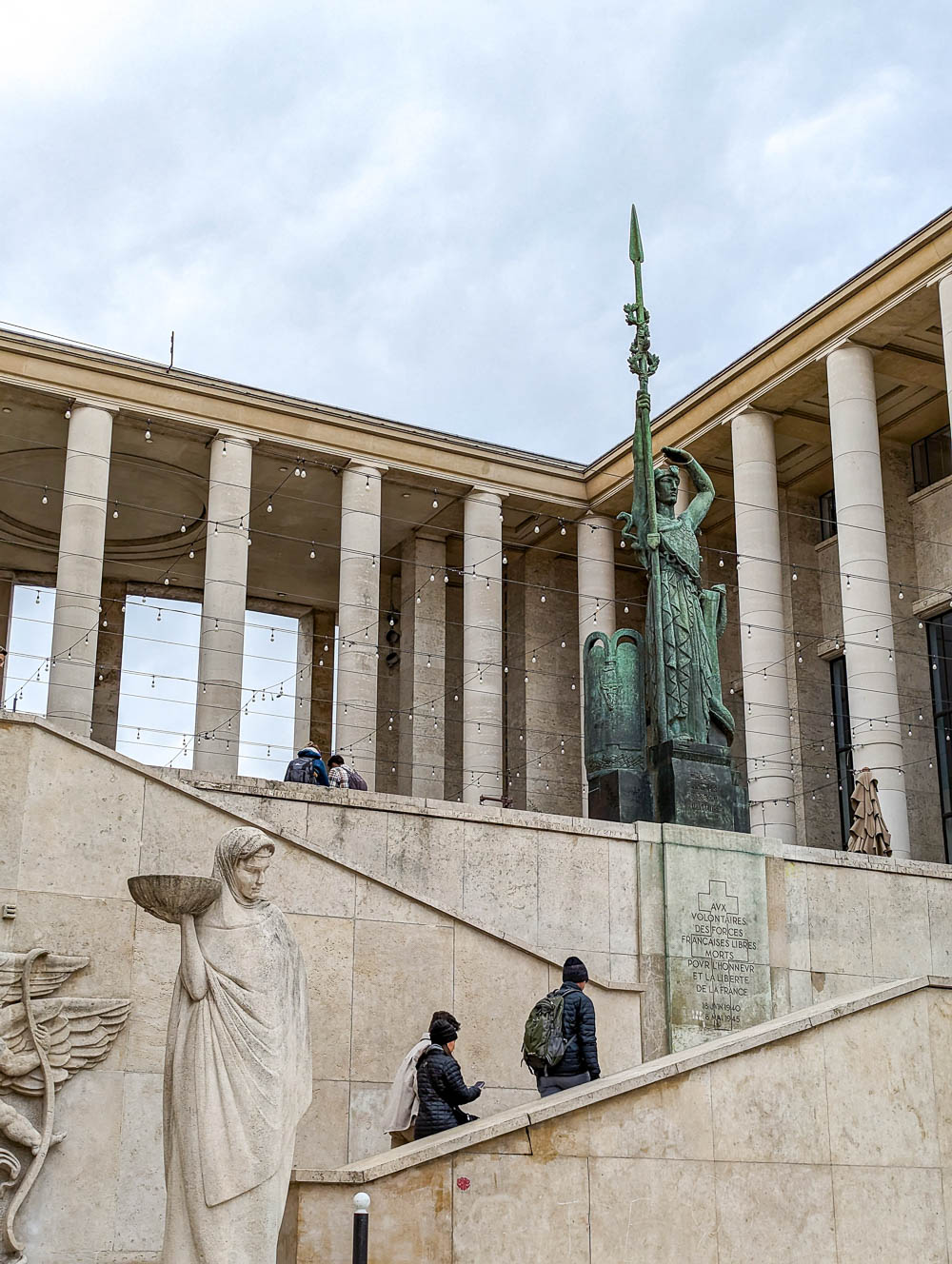
Directly beneath the statue is a panel with a quote from poet Charles Péguy: “Mother, here are your sons who have fought so hard.” The Palais de Tokyo is a complex of modern and contemporary art museums and exhibition spaces.
Free France monument need to know
Here are some key things you need to know for visiting the Free France monument:
- Look for this name in French: Le Monument de la France Libre
- Neighborhood: 16th Arrondissement
- Open: Always open
- Admission: Free
- Accessibility: The Palais Tokyo is fully accessible.
- Guided tours: Not available

13. The Pantheon
Paris’s Pantheon stands as a larger-than-life memorial to all the great men (and now women) of France. As far as WWII sites in Paris go, the Pantheon therefore serves as a shrine to those important figures who fought for France’s liberation.
Among the great writers, scientists, and politicians buried within, you’ll also find the tombs of:
French Resistance heroes
Jean Moulin – Served as the first President of the National Council of the Resistance and was tortured and killed just two months later.
Geneviève de Gaulle-Anthonioz – Member of the French Resistance and niece of Charles de Gaulle. (Her coffin at the Pantheon contains only soil from her gravesite as she preferred to be buried elsewhere alongside her husband.)
Germaine Tillion – French Resistance member and former inmate at Ravensbrück concentration camp. (Her tomb also contains only soil from her actual gravesite.)
Pierre Brossolette – Journalist and French Resistance hero
Josephine Baker – American actress who aided the French Resistance while living in Paris, among many other accomplishments and contributions. She is buried elsewhere but honored with a cenotaph at the Pantheon. She was the first black women to ever appear in a motion picture and the first black woman honored with internment at Paris’s Pantheon.
André Malraux – French novelist who joined the French army and then the French Resistance after he escaped capture. He later led the French attack on Stuttgart, Germany. Later appointed by De Gaulle as France’s Minister for Information and later the Minister for Cultural Affairs. (This guy was a badass.)
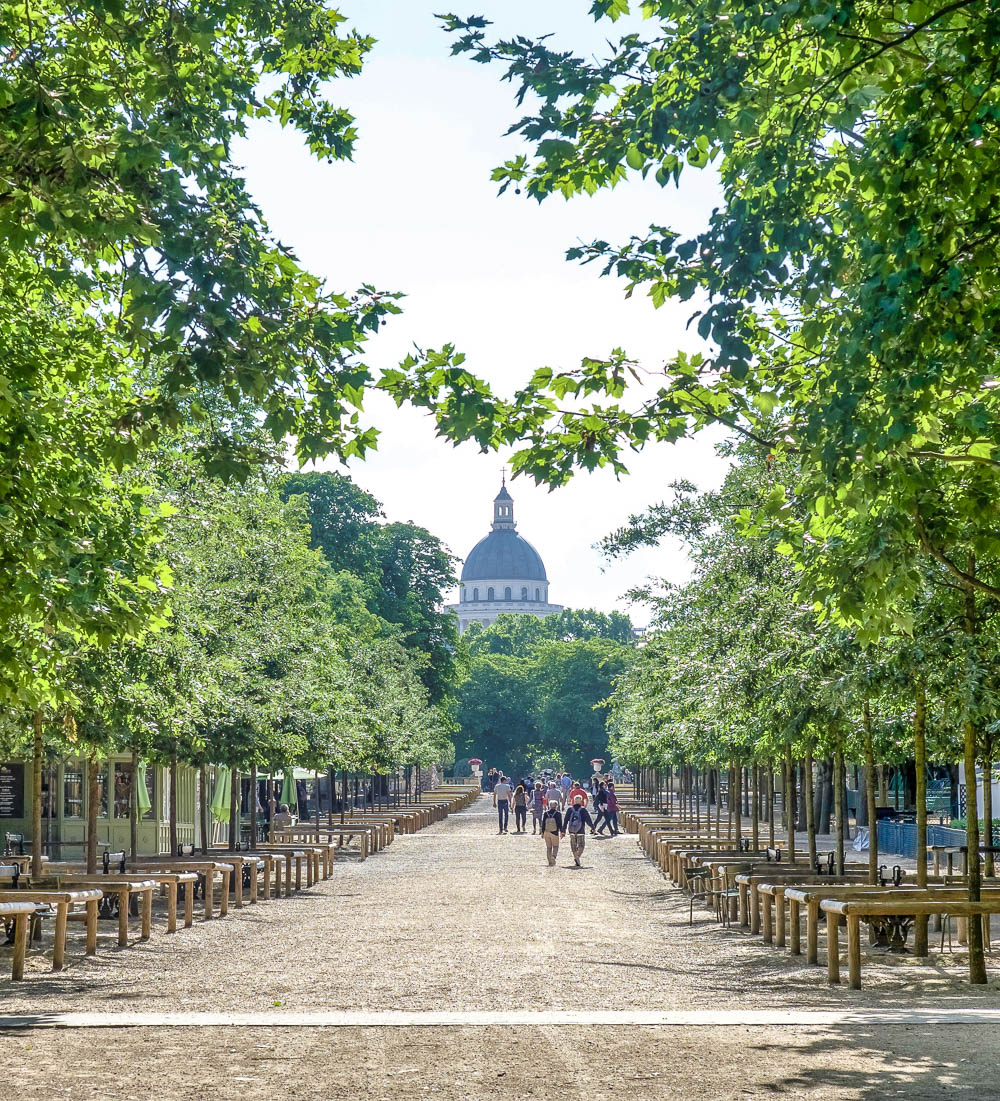
French fighters and politicans
Antoine de Saint-Exupéry – French writer who joined the Free France Air Force and died in a plane crash during a reconnaissance mission in the Mediterranean. (Among his works is The Little Prince.)
Jean Monnet – Known as “The Father of Europe” and one of the founding fathers of the European Union. Unofficially worked very closely with Charles de Gaulle and Winston Churchill during the war and even became an advisor to President Roosevelt. Seriously, read his bio; he had a hand in so many of the war’s notable decisions.
Simone Veil – French politician, advocate for women’s rights, and Holocaust survivor (former inmate at both Auschwitz and Bergen-Belsen).
Jean Zay – French politician who was convicted of treason by the Vichy government for fleeing to Morocco to form a resistance group. He was imprisoned and eventually murdered.
René Cassin – Nobel Peace Prize winner and legal aide to Charles de Gaulle’s Free France in exile.
Félix Éboué – Served as the governor of Chad during the war and worked to encourage African support for Free France. He was a member of the Council of the Order of the Liberation and the first black man interred at the Pantheon.
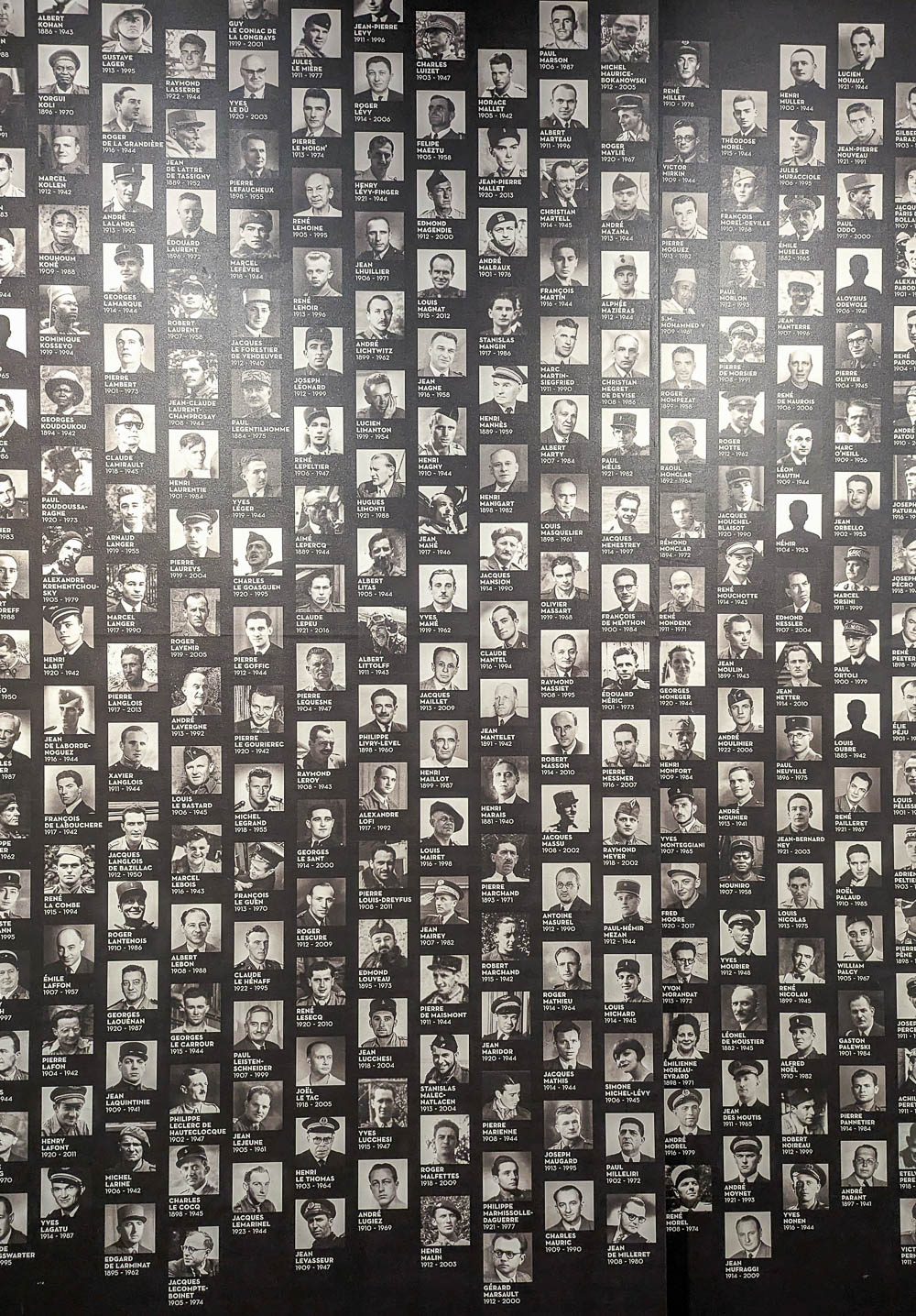
Pantheon memorials
Beyond the tombs and memorials to these noteworthy figures, the Pantheon also houses a plaque dedicated to the 2,600 people recognized by Yad Vashem as Righteous Among the Nations. These noted men and women risked their own lives to save those of Jews bound for concentration camps. Then president Jacques Chirac unveiled this memorial in 2007.
Other notable figures buried in the Paris Pantheon include Louis Braille, Victor Hugo, Marie and Pierre Curie, Voltaire, and Alexandre Dumas.
Paris Pantheon need to know
Here are some key things you need to know for visiting the Pantheon in Paris:
- Look for this name in French: Panthéon
- Neighborhood: Latin Quarter / 5th Arrondissement
- Open: Daily from 10am – 6:30pm (Apr 1 – Sept 30) and 10am – 6pm (Oct 1 – Mar 31)
- Admission: €16 full price adult
- Accessibility: Lots of accessibility options here. See them all here.
- Guided tours: Unknown
- Pro tip: For just a few euros more you can climb to the top of the Pantheon for the most amazing views of Paris and the Eiffel Tower.
- More information here: paris-pantheon.fr
14. Fighting France Memorial & Mont-Valérien Fort
The Fighting France Memorial at Mont-Valérien Fort opened in 1960 to memorialize those French combatants and resistance members who died in WWII. It features sixteen sculptures that tell stories of France’s heroism during the war as well as an eternal flame. Fifteen combatants as well as an symbolically empty grave are interred in a crypt.
The Fighting France Memorial is seen as the most important memorial to French WWII dead and is located below the Mont-Valérien Fort in nearby Suresnes. Fort Mont-Valérien was used by Germans as a place to execute French Resistance members from 1941-1944. (1,014 of them to be exact.)
There is also a visitor information center and a permanent exhibition area to learn more about the events and people being memorialized here.
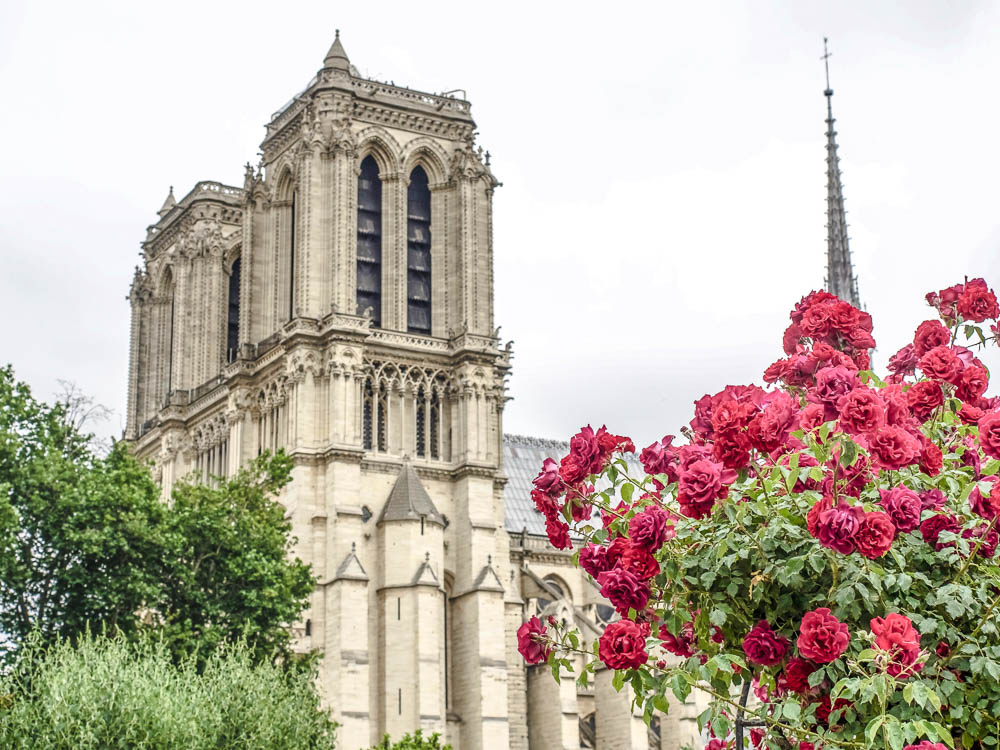
Fighting France Memorial & Mont-Valérien need to know
Here are some key things you need to know for visiting the Fighting France Memorial and Mont Valérien:
- Look for this name in French: Mémorial de la France Combattante
- Neighborhood: Suresnes, France
- Open: Daily, but hours vary according to group size, etc. See all hours here.
- Admission: Free
- Accessibility: Accessibility is a priority here. Get the details here.
- Guided tours: All visits require a guided tour, which are free. Reservations are mandatory.
- Pro tip: You can follow a memorial path from the crypt to the clearing where the executions took place, if you’d like to add an extra layer to your visit.
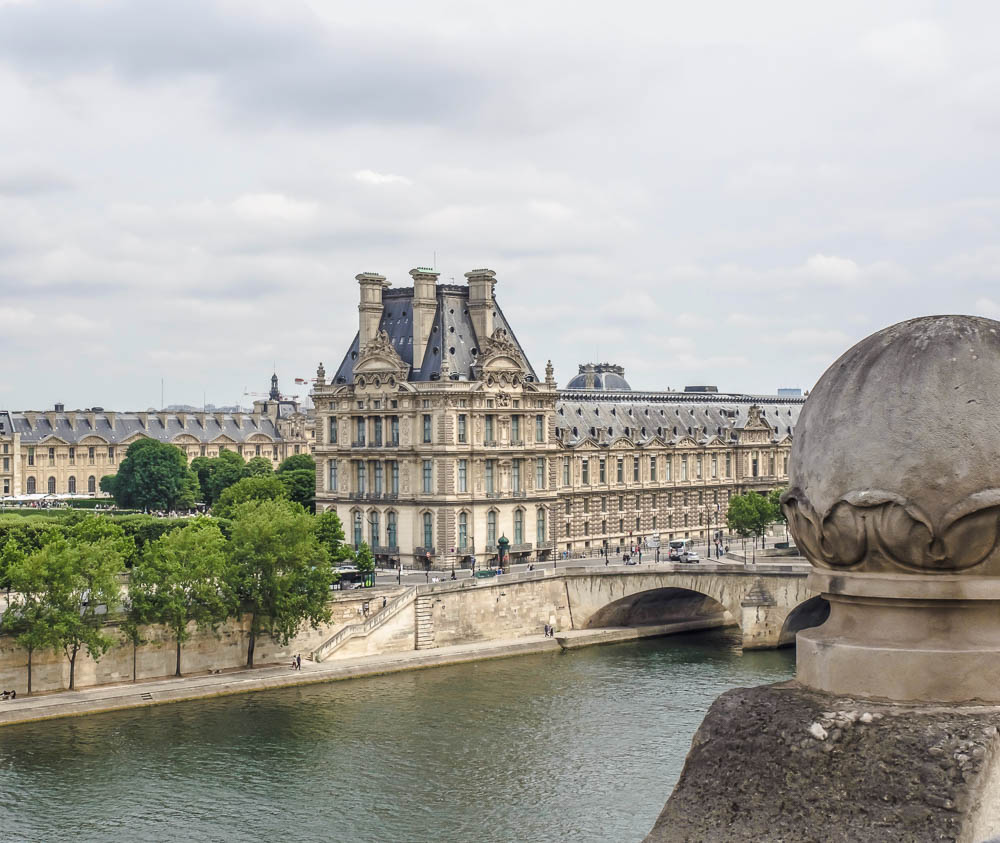
15. Jardin des Combattants Espagnols de la Nueve
Located on the edge of the Hotel de Ville (the Paris City Hall) along the River Seine is the Jardin des Combattants Espagnols de la Nueve. This lovely memorial garden is dedicated to:
The Spanish anti-fascist Republicans who continued their struggle by committing themselves to the [French 2nd Armored Division] / Heroes of the Liberation of Paris
The name Combattants Espagnols de la Nueve refers to La Nueve, the 9th Company of the Regiment de marche du Tchad which was part of the French 2nd Armored Division. There were actually 160 men in this unit, not nine, most of whom were Spanish Republicans who fled Spain after Francisco Franco’s victory in the Spanish Civil War.
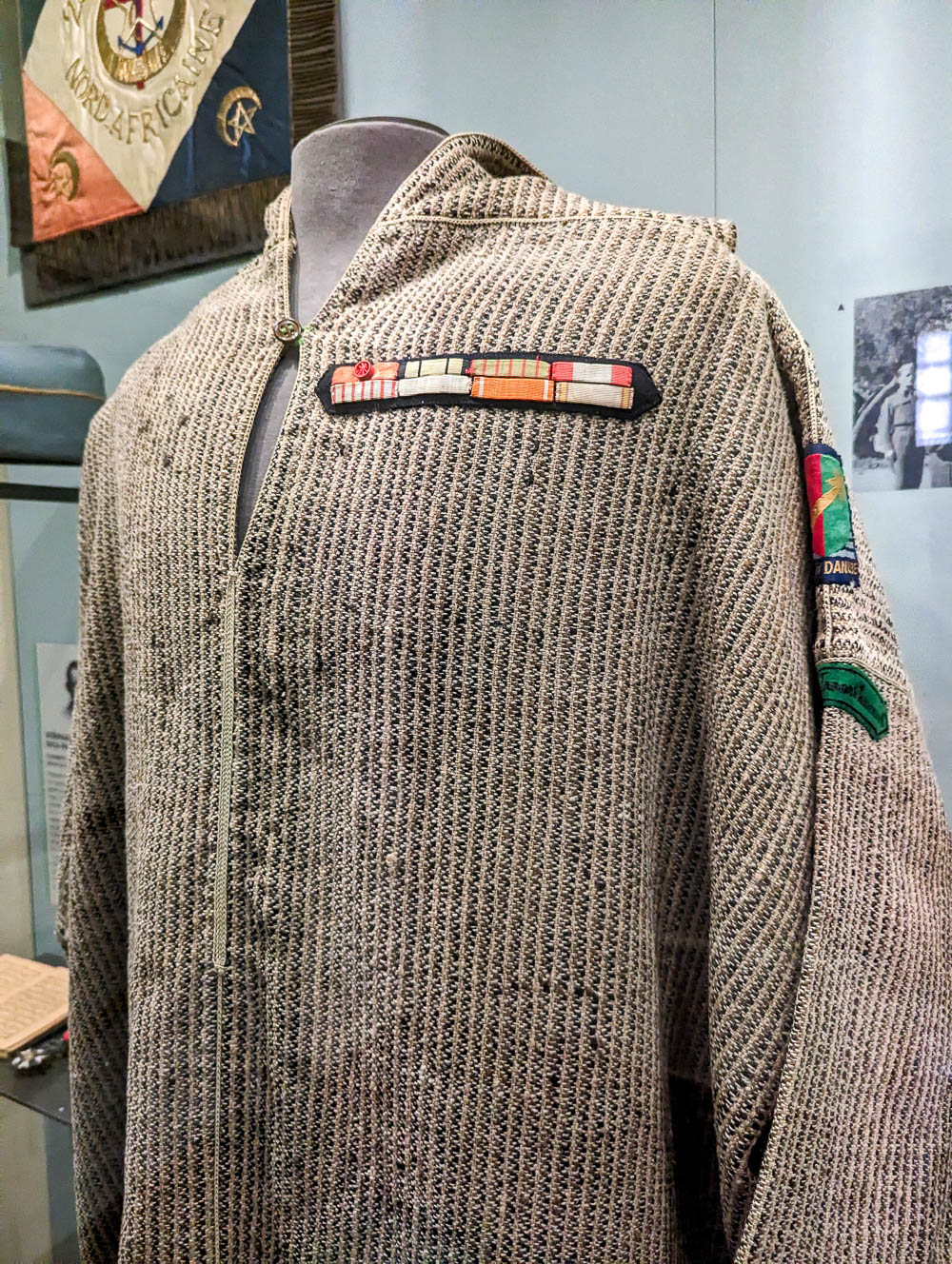
This unit served in North Africa as well as in the liberation of Paris. In fact, the men of “The Nine” were the first to enter Paris on August 24, 1944. The memorial garden in their honor enjoys a prominent location, lots of green space, a chicken coop and rabbit cages, walking paths, benches, and some statuary.
Jardin des Combattants Espagnols de la Nueve need to know
Here are some key things you need to know for visiting the Jardin des Combattants Espagnols de la Nueve:
- Look for this name in French: Jardin des Combattants Espagnols de la Nueve
- Neighborhood: 4th Arrondissement
- Open: Weekends and public holidays from 9am to dusk
- Admission: Free
- Accessibility: At street level, but mostly grass and gravel paths.
- Guided tours: Not available
- Pro tip: Look closely at the exterior of Hotel de Ville and you’ll see bullet holes from the battles that took place during the liberation of Paris (and a memorial plaque to clue you in).
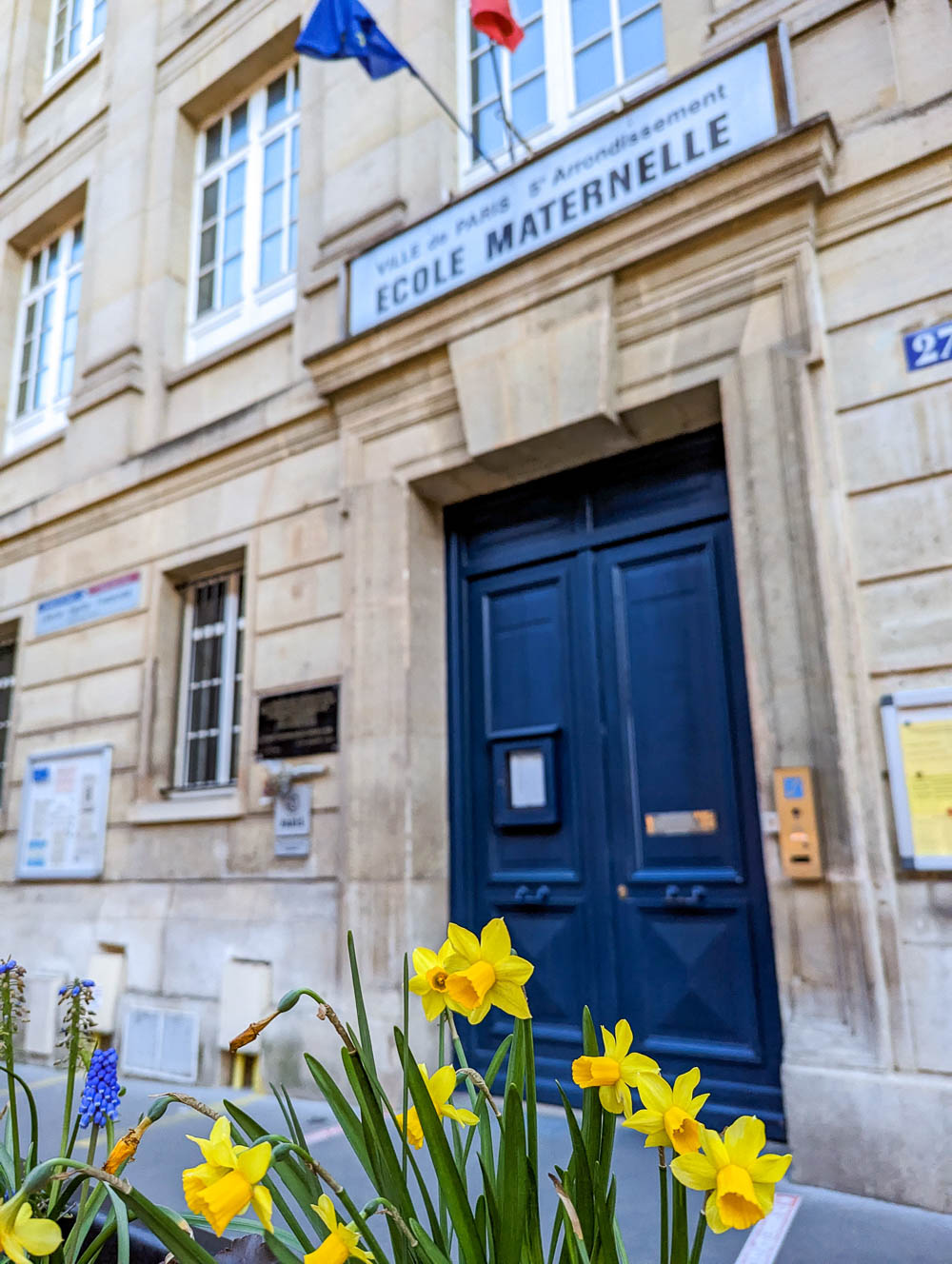
16. Children’s war memorials
Located all around Paris are small memorials to the child victims of World War II that are pretty easy to miss. These memorials exist as black plaques typically posted outside the entrance to the city’s elementary schools. Here’s an interesting write-up of these memorials.
The one pictured here reads:
In memory of the children at this school deported from 1942 to 1944 because they were born Jews, innocent victims of Nazi barbarity with the active complicity of the Vichy government.
They were exterminated in the death camps. Never forget them.

Similar plaques exist all over the city and are usually found with some flowers or other thoughtful mementos. If you’d like to find some of these yourself, start here at the following locations: (But keep in mind these are elementary schools so act accordingly.)
- École Maternelle Poissy, 27 Rue de Poissy (pictured above)
- École Élémentaire Récollets, 19 Passage des Récollets
- École Élémentaire Publique Saint-Jacques, 250 bis Rue Saint-Jacques
17. Miscellaneous WWII memorials around Paris
In almost every other European city you’ll find Stumbling Stones—the small brass bricks installed outside the homes of Jews who were taken and (most likely) killed. But there are two cities where you won’t find these—Munich, Germany and Paris, France. (They each have their reasons.) For more on these stones and the controversy surrounding them in Paris, see my full post on Stolpersteine here.

Paris’s subtle WWII memorials
In lieu of these, Paris has installed simple memorial plaques all over the city that memorialize members of the French Resistance and other notable events that occurred here. Like the children’s memorials, they are almost hidden in plain sight.
I don’t know how many of these there are, but I know it’s a lot. And I don’t know all of their locations either, but I do know they’re everywhere. I made it a point to seek out a few on my recent trip, but the next time you’re in Paris, keep your eyes peeled. Here are some I recently found:
- Memorial to those who led the national insurrection from August 19-25, 1944 on their house @ 39 Avenue de la Bourdonnais (pictured below, left)
- “Here fell on August 25, 1944 Jacques Hardy. Died for France.” @ 11 avenue de Lowendal (pictured below, right)
- Memorials to Jean Boulogne, Pierre Bounin, and Jean Bachalet, French combatants killed during the liberation of Paris, at 60, 62, and 79 Boulevard Saint-Michel
- At Gare d’Austerlitz (train station), a memorial commemorating the deportations of Jews that originated here: that of 3,700 Jewish men on May 14, 1941 and 7,800 Jews (including 4,000 children) from July 19-22, 1942
You can also find similar memorial plaques at such well-known Paris locations as the Pont des Artes, the Musée d’Orsay (a former train station), and on the side of the fountain at Place Saint-Michel. And this is to name just a few. I mean it, these are everywhere.
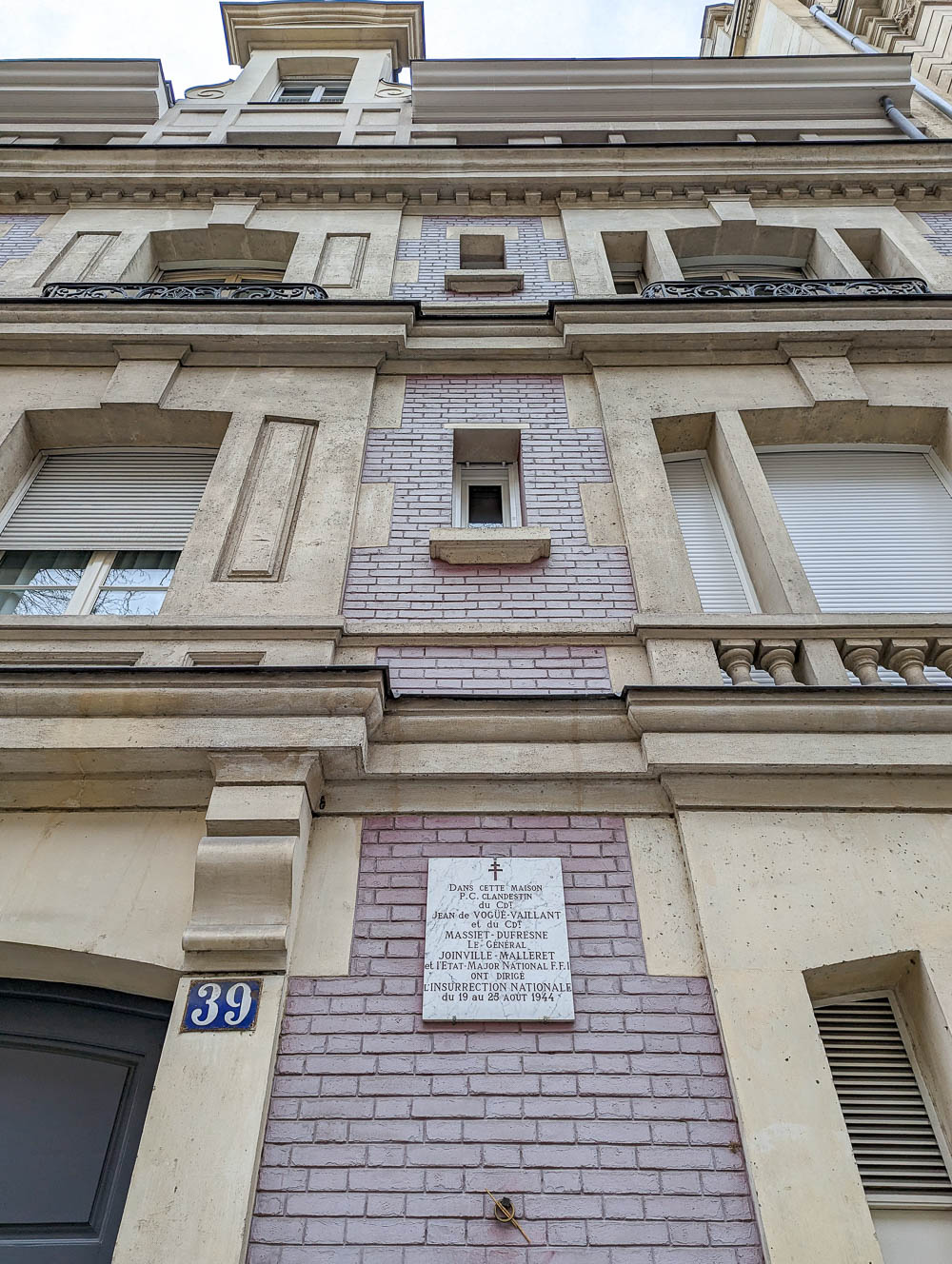
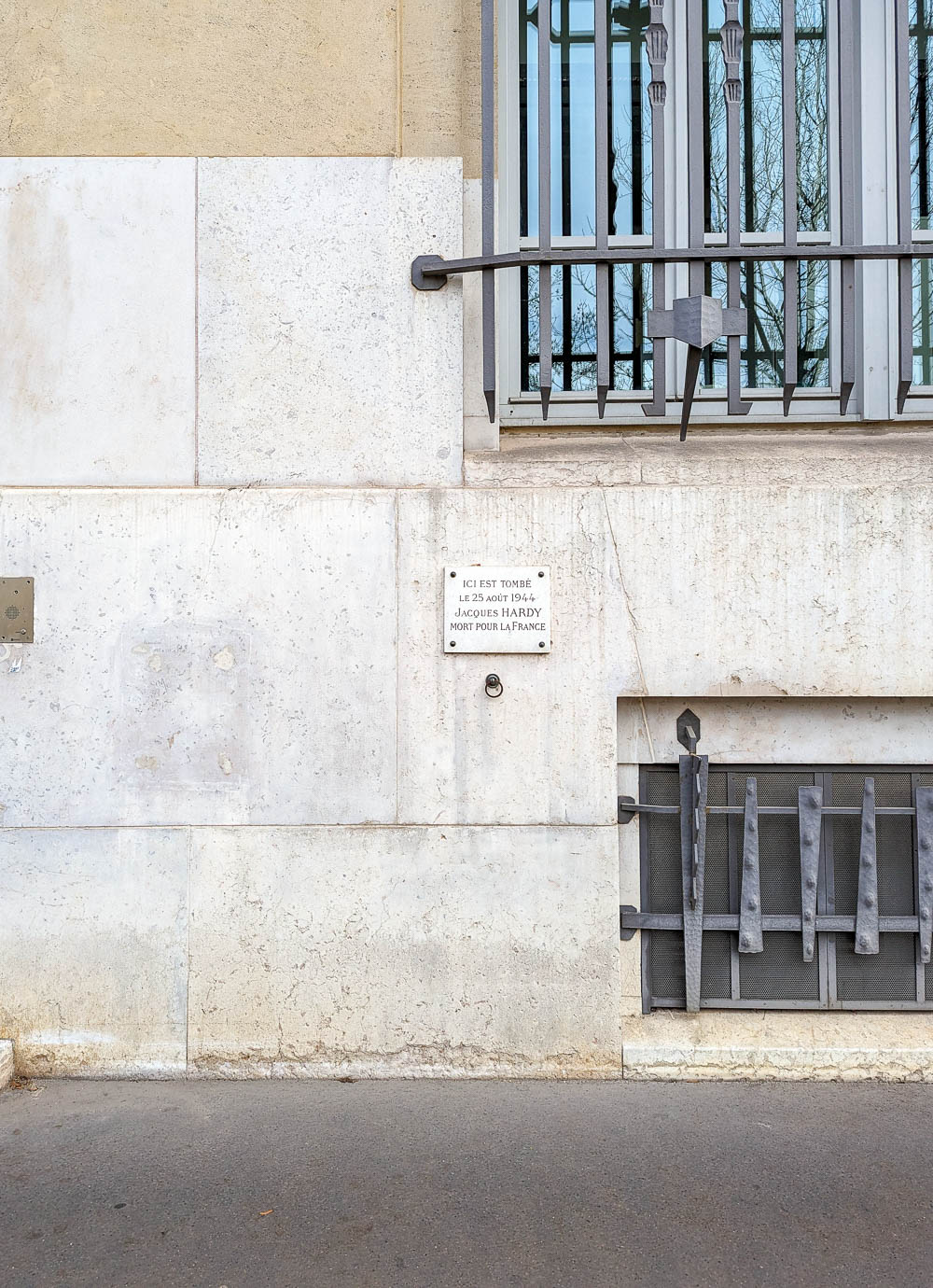
18. The Drancy Memorial
While I tried to keep this list specific to WWII sites in Paris, I still want to mention one that’s close by and easily accessible – the Paris concentration camp. If you have some time to venture out of the city center, plan a visit to the Shoah Memorial and Drancy Internment Camp Memorial in Drancy. (You’ll see this place mentioned often during your time at the WWII sites in Paris, so you might as well check it out for yourself.)
Drancy, France is a small commune about a half hour drive northeast of Paris. It used to be the site of the Drancy Internment Camp which was essentially a holding camp for prisoners the Nazis were deporting to extermination camps.
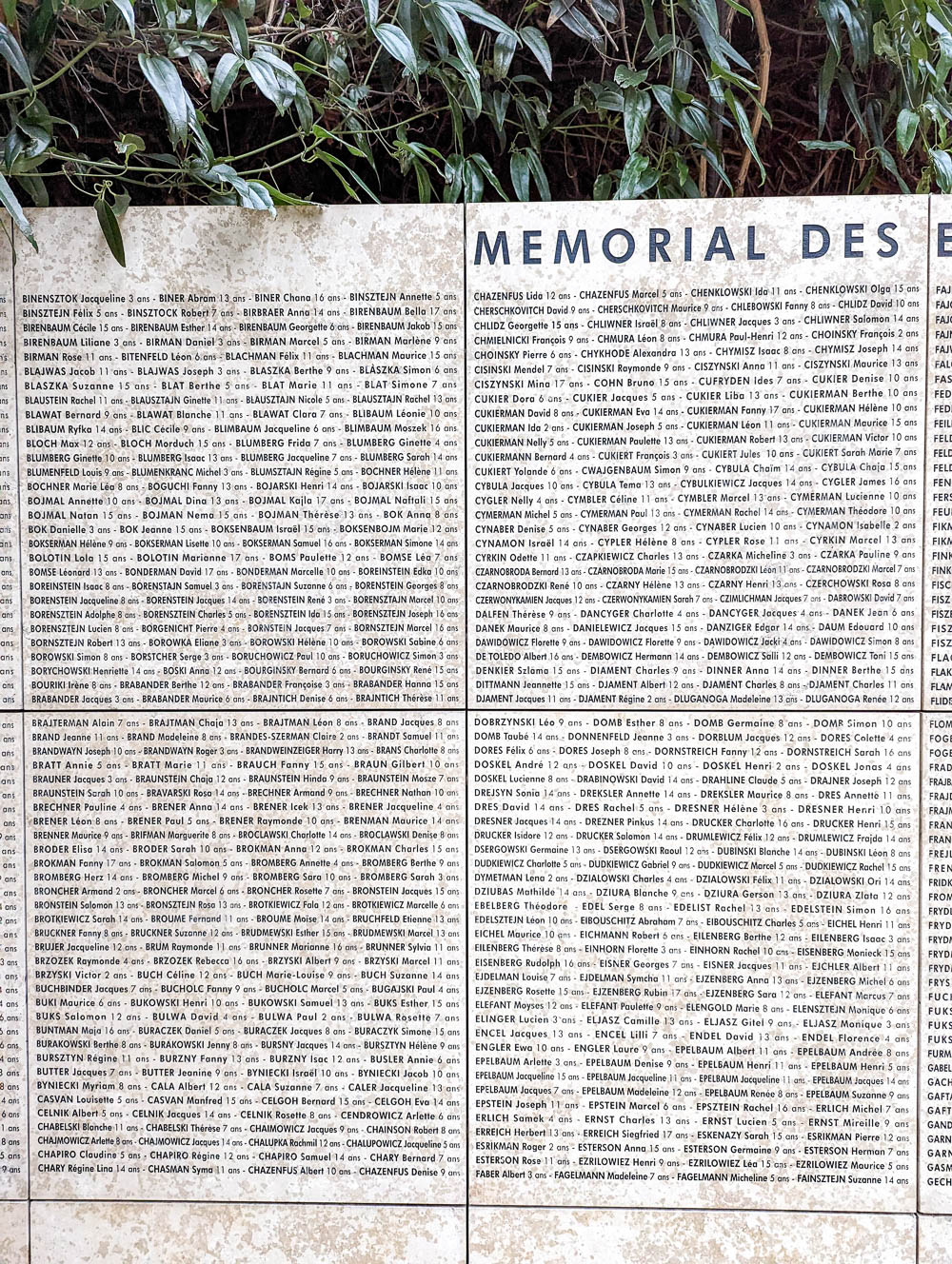
In Drancy today, a large park and memorial space has replaced the former camp. On either end is a former rail car-turned-memorial and a large 3-piece memorial sculpture.
Across the street is the Drancy branch of the Shoah Memorial. It has a permanent museum exhibition that focuses on the history of the camp at Drancy and the lives of those sent here during the deportations.
Other kinds of WWII sites in Paris
The long list of WWII sites in Paris doesn’t stop at museums and memorials though. There are still a number of other sites that don’t fit into either of those categories.
19. Jeu de Paume Library
If you’ve read the book Monuments Men (and if not, you should!), then you’ll recognize this place immediately. The Jeu de Paume library is where the legendary resistance fighter and Monuments Woman Rose Valland worked as curator.
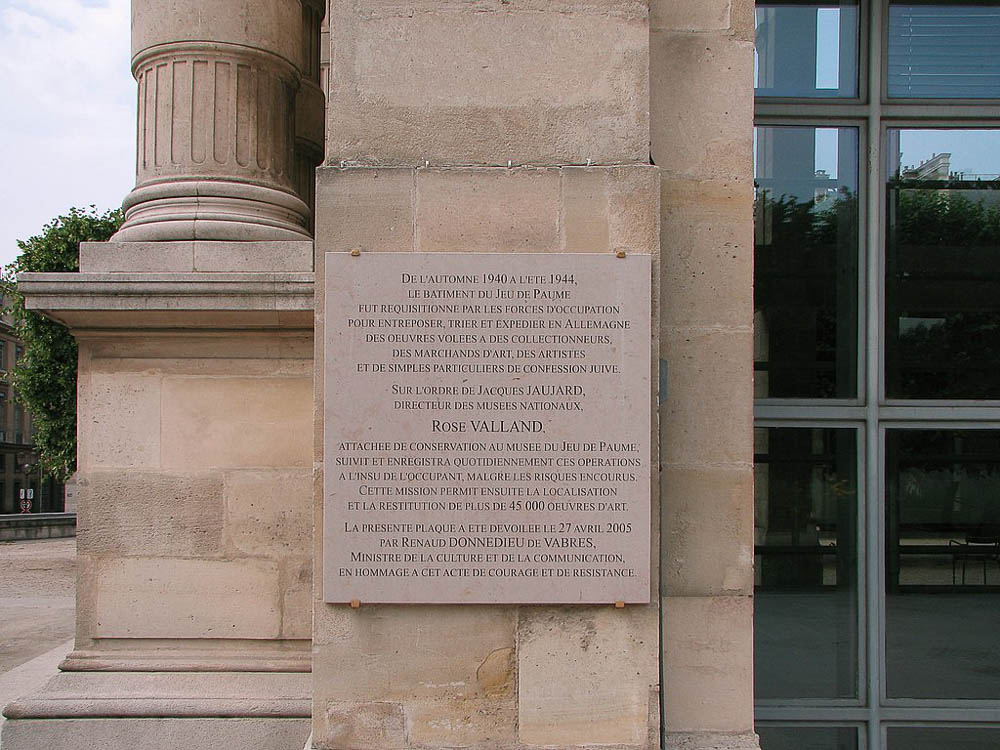
It was here at the Jeu du Paume that Nazi art looters stored their stolen artworks before sending them to Germany. Through her meticulous record-keeping and strength of will, Valland risked her life to help save (and return to their rightful owners after the war) countless priceless works of art from Nazi plunder and destruction.
Today, there’s a large memorial plaque to Valland and her brave work on the outside of the Jeu du Paume. (pictured above)
Get your copy of The Monuments Men: Allied Heroes, Nazi Thieves and the Greatest Treasure Hunt in History by Robert Edsel here. (Skip the movie.)
20. Helene Berr Home
Just one block over from the Eiffel Tower you’ll find the former home of Helene Berr, a young Jewish woman popularly known as the “French Anne Frank.”
In 1942 at 21 years old, she began keeping a diary. Like Anne Frank’s, it begins simply with her account of daily life which evolves into a description of life as a Jew under Nazi occupation. She and her parents were captured and deported to Auschwitz in 1944; she died at Bergen-Belsen a year later.
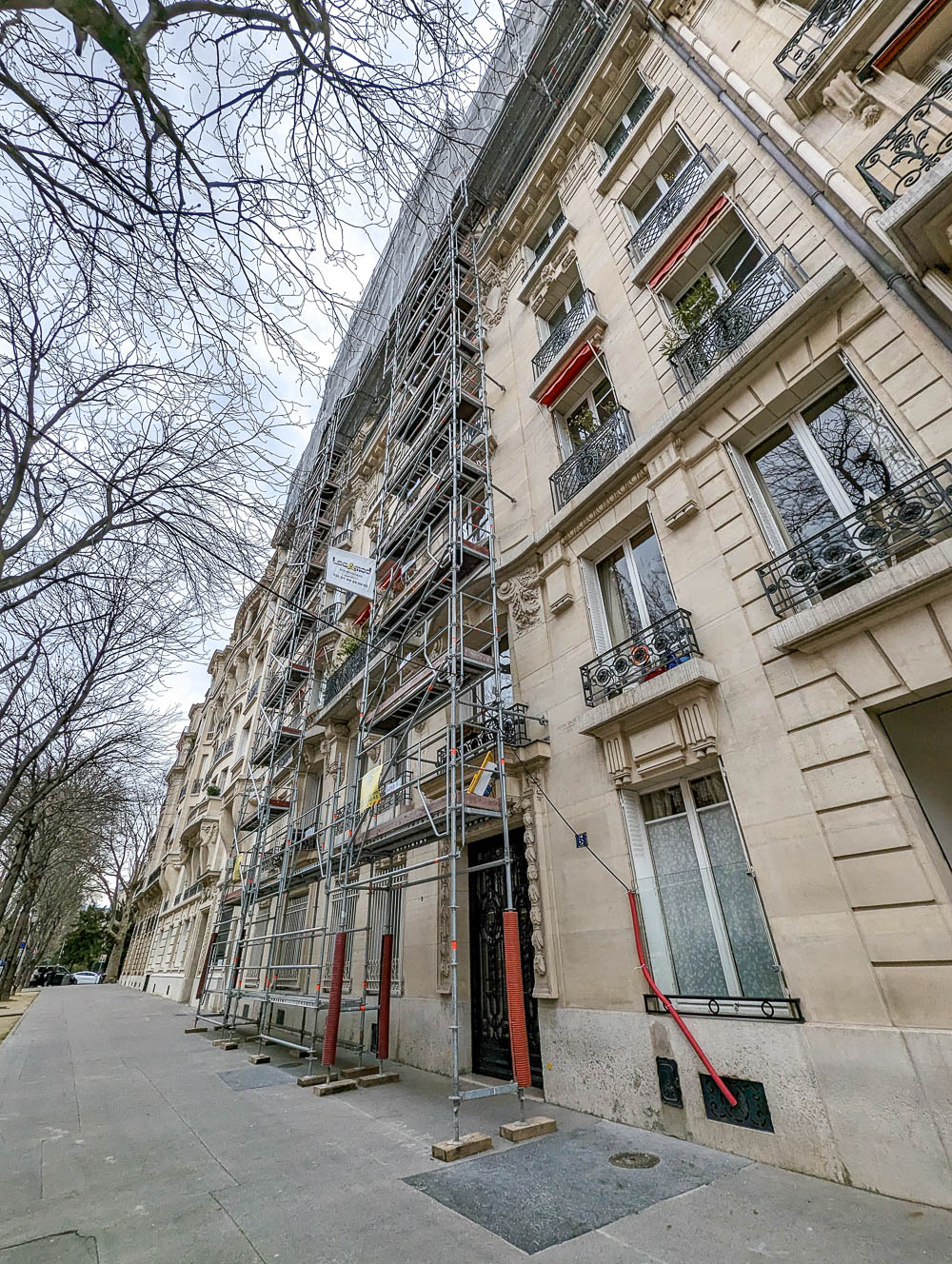
Her diary was not published until 2008 but has become widely celebrated for the gift that it is. On the outside of her house at 5 Av. Elisée Reclus you’ll find a memorial plaque that reads:
Here lived Hélène Berr / Arrested with her parents on March 8, 1944 / She was deported with them to Auschwitz / She died at the beginning of April 1945 at Bergen-Belsen camp at the age of 24
Pick up your own copy of The Journal of Helene Berr here and give it a read before your trip to Paris.
21. Suresnes American Cemetery
Just a short drive west of central Paris is the Suresnes American Cemetery. This cemetery was founded as, and still mostly is, a cemetery for World War I casualties. But today it also serves as the final resting place for 23 unknown Americans who died in World War II.
Being that it’s an American cemetery, you’ll find the standard white marble cross grave markers and a number of memorials as well. Suresnes American Cemetery is open daily from 9am – 5pm.
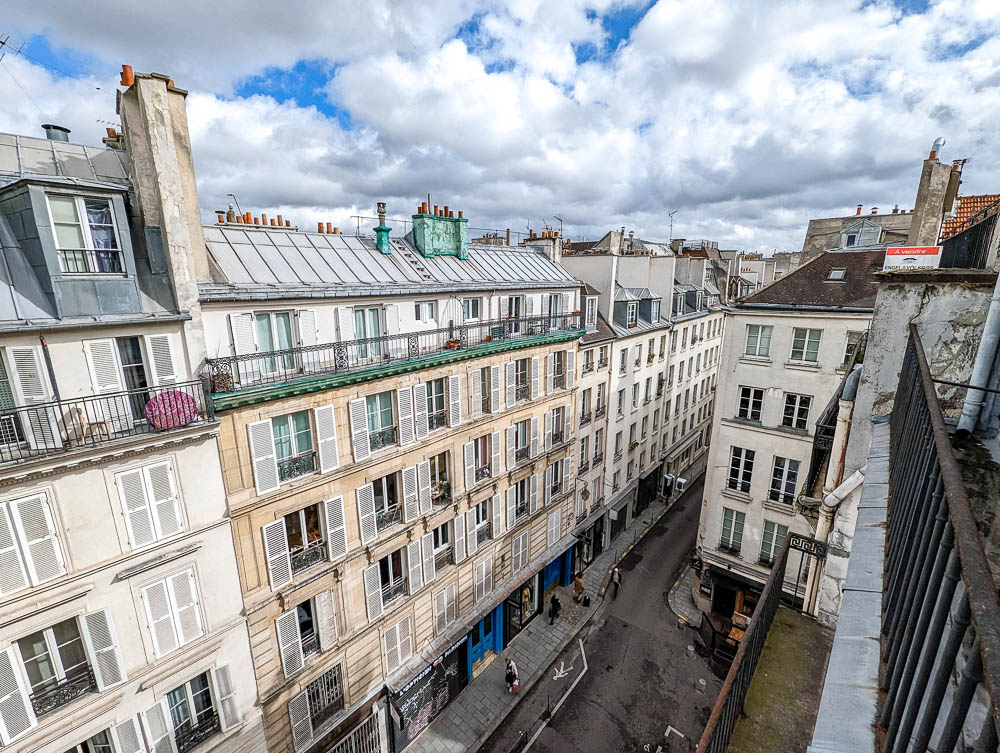
Where to stay to visit the WWII sites in Paris
When visiting the WWII sites in Paris, I highly recommend staying somewhere as central to them all as possible. Paris is quite large and getting around can waste a lot of time if you stay in a remote location. Here are some hotels I recommendation for helping make the most of your time in Paris:
Hotel le Compostelle
On my visit to Paris in 2023 I stayed at the Hotel le Compostelle. This lovely hotel is in a great neighborhood just minutes from the Shoah Memorial, the Deportation Memorial, and more of the sites in this post. I could walk just about everywhere.
The staff is incredibly friendly and accommodating and my room was clean and had everything I needed. It was convenient to get to and I loved the view from my room. I would definitely stay here again.
Book your room at Hotel le Compostelle here.

Hotel Notre Dame Saint Michel
In 2017 I stayed at the Hotel Notre Dame Saint Michel and absolutely loved it. It’s in a perfect location—just across the river from Notre Dame and smack in the middle of most of the WWII sites in Paris.
The staff is lovely and the room views are incredible. It’s easy to walk to most places from here and the location just can’t be beat.
Book your room at Hotel Notre Dame Saint Michel here.
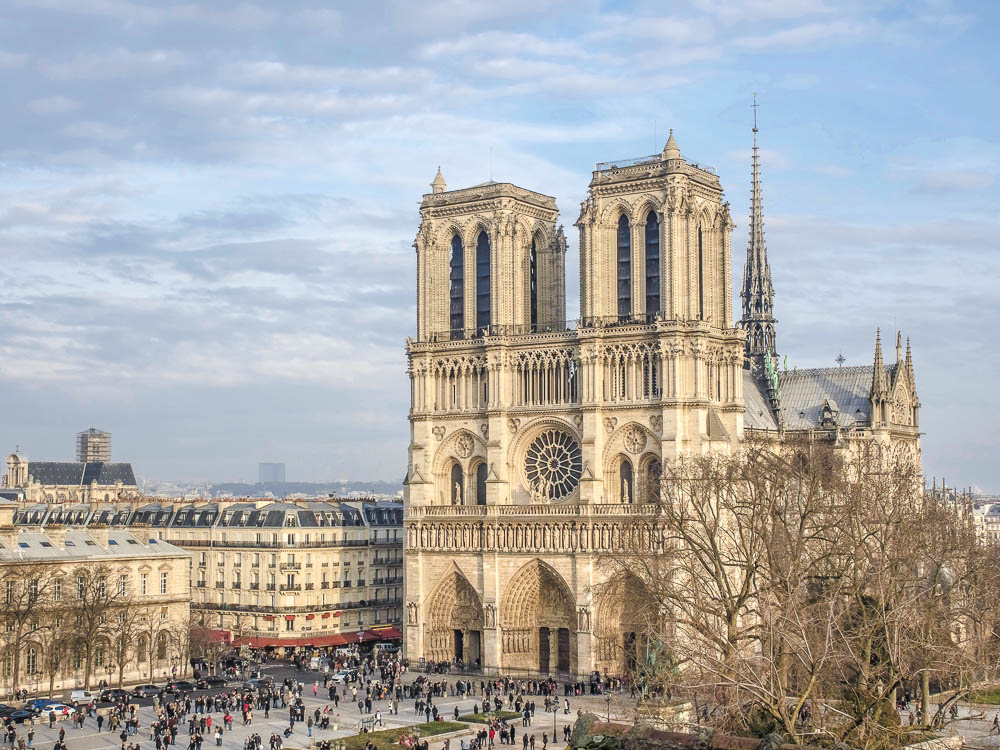
Champ de Mars Hotel
The Champ de Mars Hotel is another that’s in such a great location—right in between the Invalides museum complex and the Eiffel Tower. You’ll get to see a lot of the memorial plaques in this area too.
This hotel has fantastic reviews and the highest marks go to location, cleanliness, and staff. (All the most important things, no?)
Book your room at Champ de Mars Hotel here.
All other Paris hotels
Look, I’ve recommended three for you but there are tons of hotels in Paris. More than museums if you can believe it. Something may work better for you, so head here to check out all the available hotels in Paris for your trip. And to see exactly how I pick the perfect hotel every time, check out this post.
Check out all other Paris hotels here.
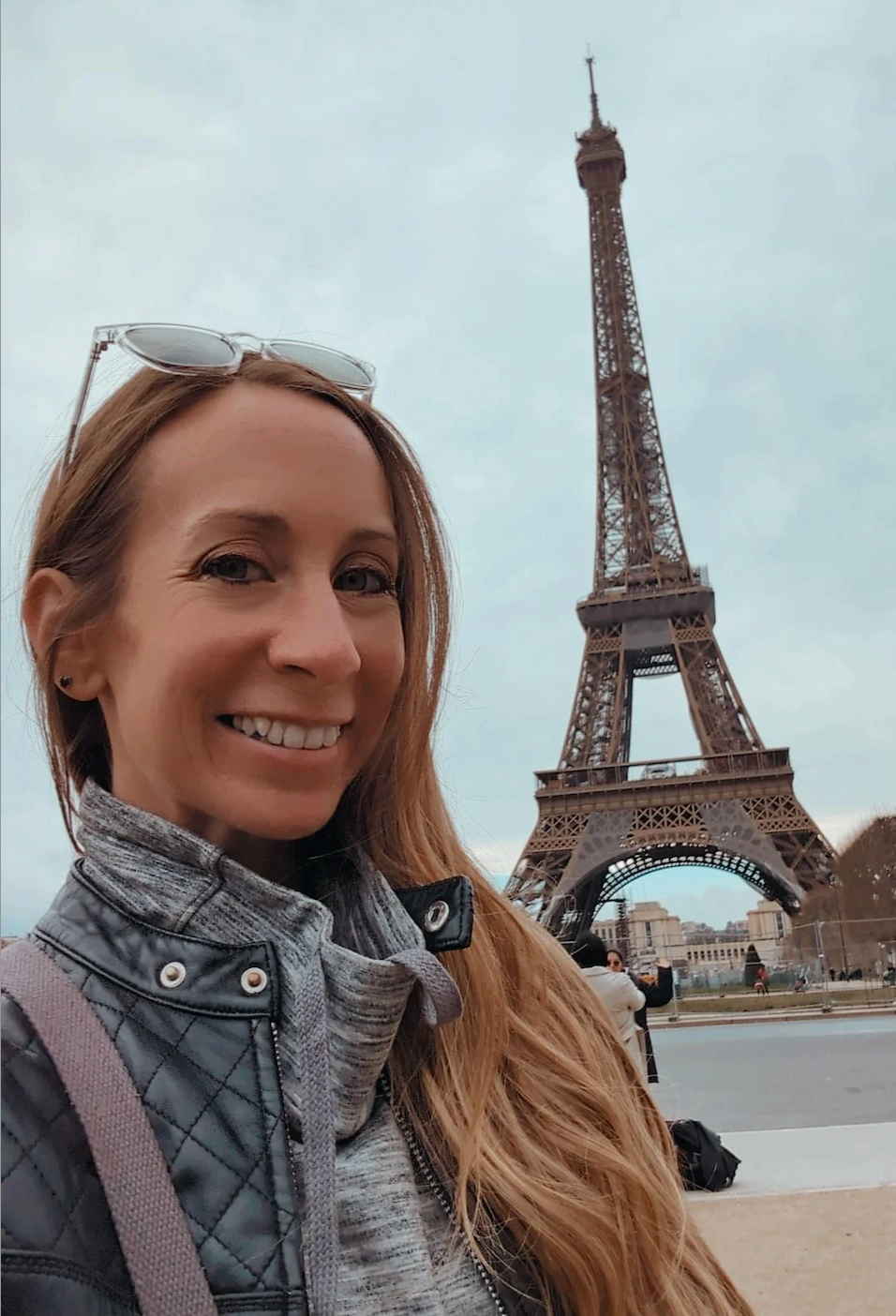
What to pack for your visit to the WWII sites in Paris
If you’re planning a trip to explore the WWII sites in Paris, here are a few essential packing items to consider:
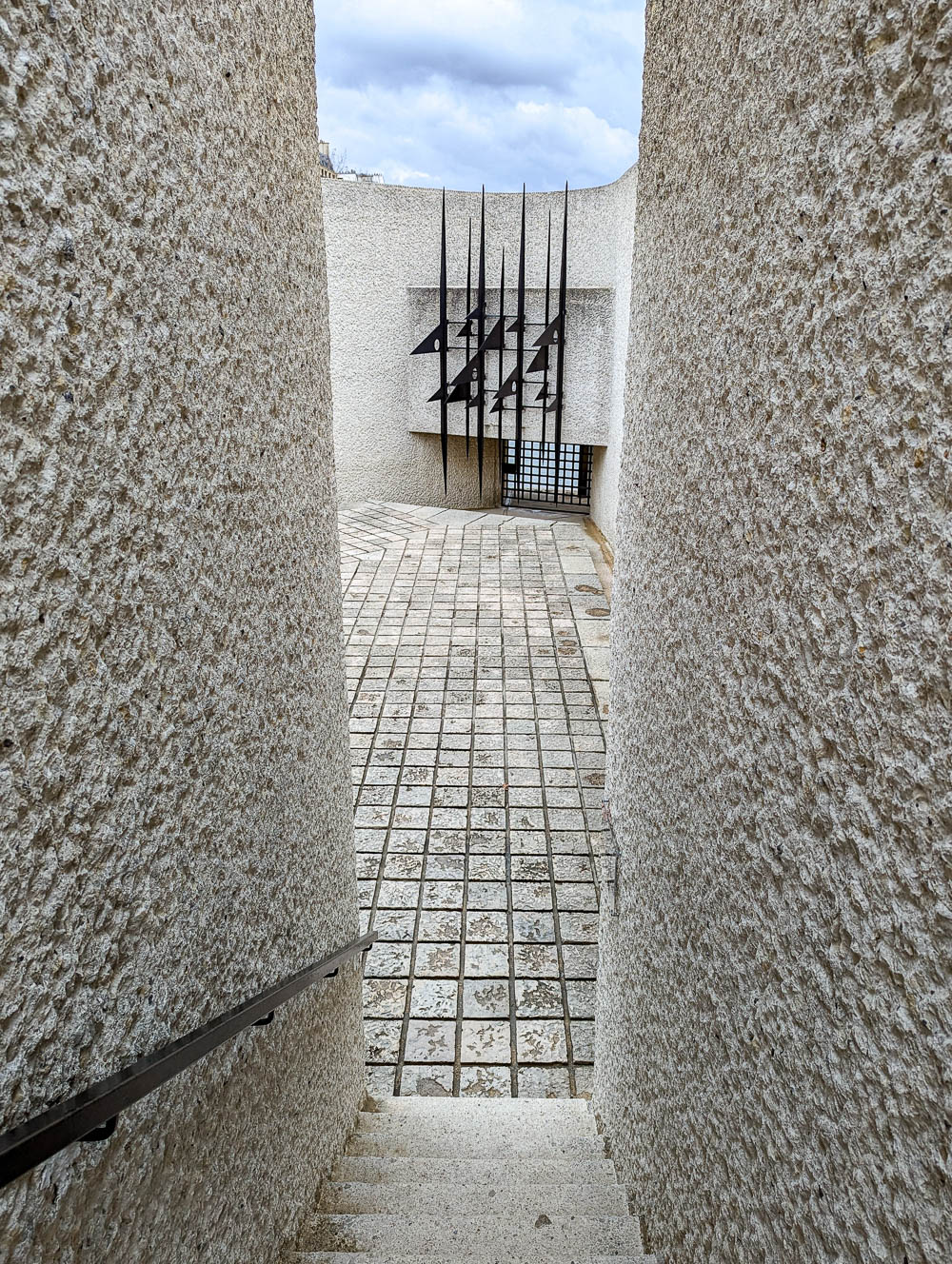
Tips for visiting the WWII sites in Paris
For the best trip possible, here are some important tips for exploring Paris’s World War II sites:
Always check the opening and closing times.
Museums in Paris have different operating schedules than you might be used to. Some are closed on Mondays or on random days of the month. Some are open late on certain nights. Most are closed on French holidays, and some in this post operate on a Jewish holiday schedule. Always double check your specific days!
Paris is way bigger than it looks on a map.
Keep in mind that some sites that look close might actually require an hour of walking. Always double check the walking times before you finalize your itinerary.
There are lots of discounts available.
In this post I listed the standard, full-price adult cost of admission to give you an idea of how much you’ll spend. But all of these sites offer tons of different discounts, some you may never have heard of before. Be sure to check the site’s long list of discounts before buying your tickets.
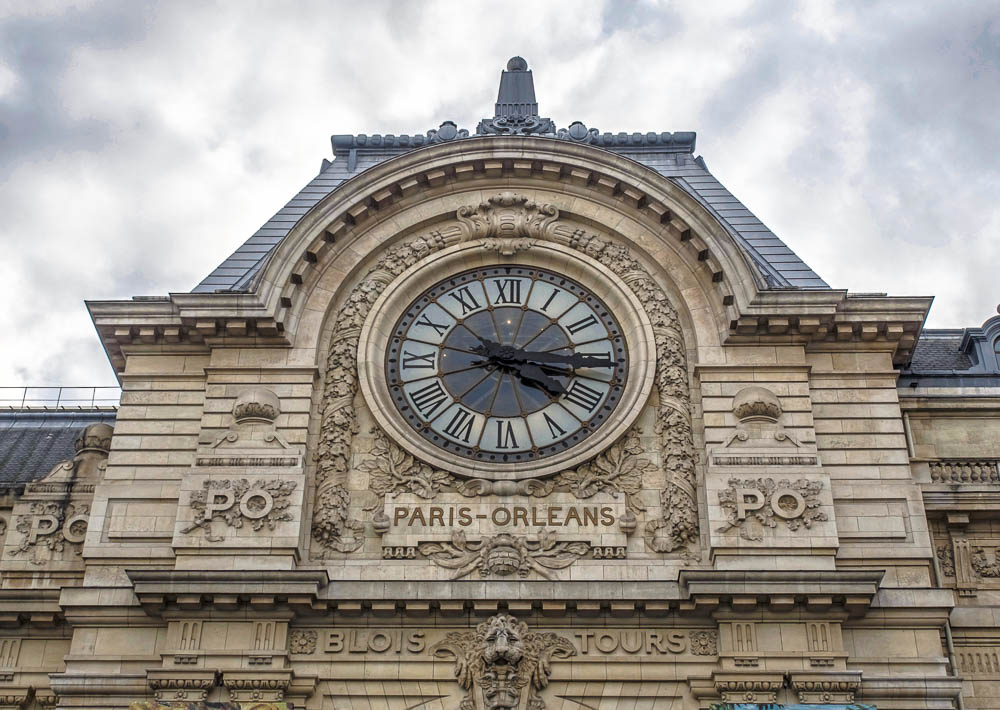
Visitors with disabilities are often admitted free.
Many of the WWII sites in Paris offer free admission to those with disabilities and their caregivers. Even if this is not listed with the discounts, most websites have a page specifically for those with special needs where you’ll find this information.
Be prepared for security checks.
At most of these sites you’ll have to go through security screening before you can enter. Be prepared to be metal detected and have your items screened. In other words, don’t wear tons of metal stuff and/or carry a lot of bags if you can help it.
Always be respectful.
As always, please please please no selfies or inappropriate behavior at the Holocaust memorials or cemeteries. Please.
For tips on planning your trip to the D-Day sites in Normandy, click that link for my full post.
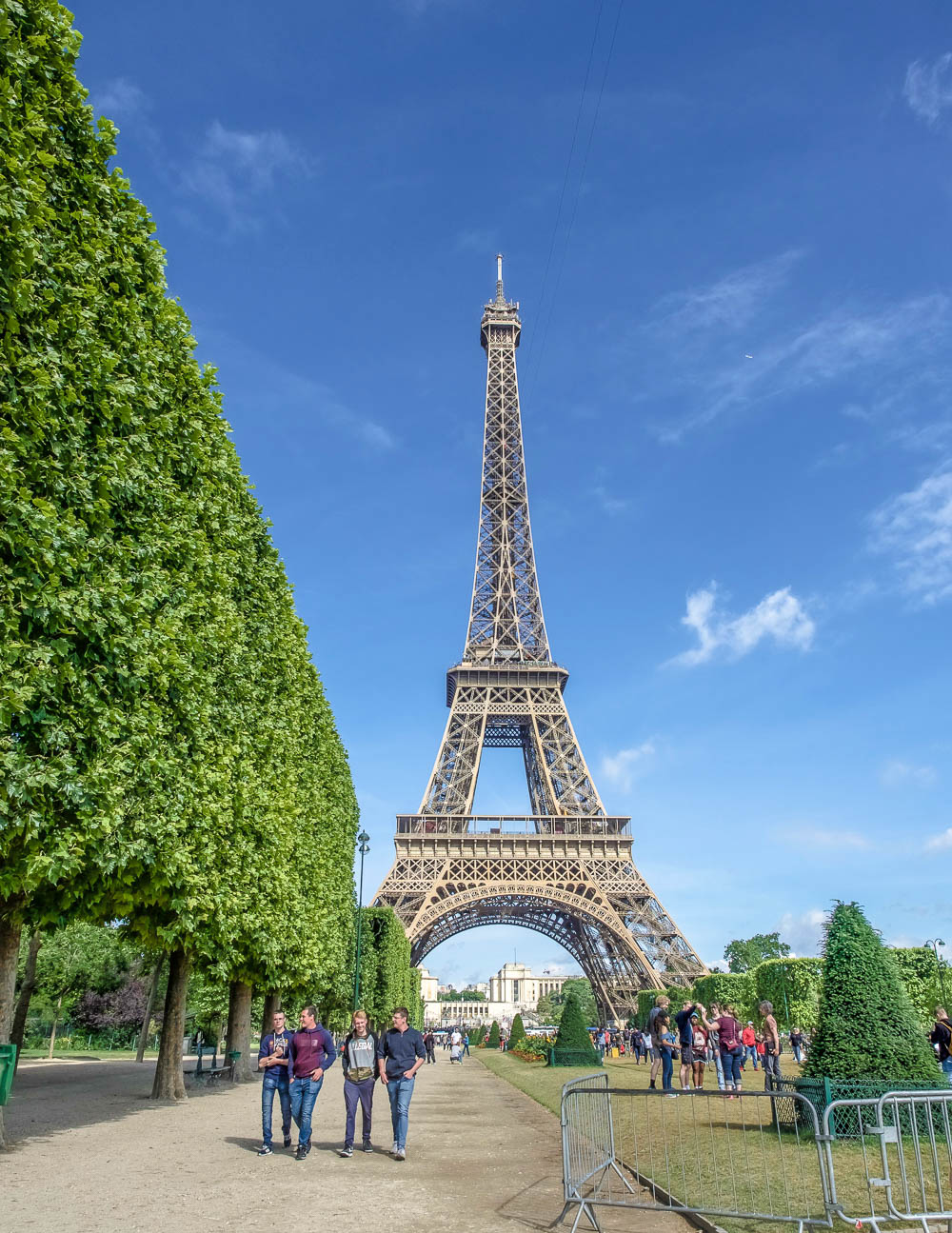
More info for your trip to the WWII sites in Paris
- Hotels: Find great places to stay on Booking.com (my go-to). Expedia and Hotels.com are worth checking too. VRBO is best for apartment rentals.
- Rental cars: Check out the best rental car deals here.
- For great local tours, check out all the options from Walks, Viator, and Get Your Guide.
- Save lots of money and time by getting some Paris GoCity passes.
- Don’t forget a Paris guidebook and this must-have France customs and culture guide!
- Want more? Here’s all the best non-WWII things to do in Paris
Like this post? Have questions about any of the WWII sites in Paris? Let me know in the comments below. Have fun in France!

Save this info, pin this image:
